#and that sometimes their expressiveness is in Symbols sometimes its more so in Movement perhaps along w/their voice
Explore tagged Tumblr posts
Text
hand to forehead. bracing inhale. LOS endearing as always
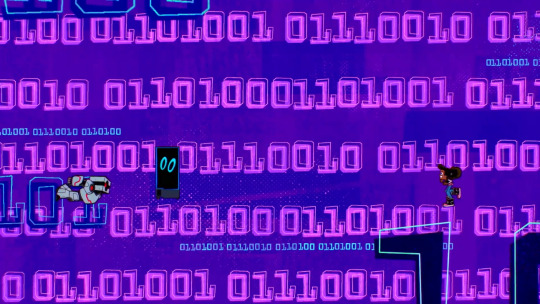
look at their little Two Eyes expressive display format
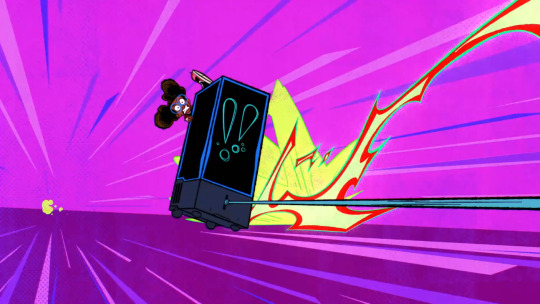
look at their little ‼️😰 expressive display format
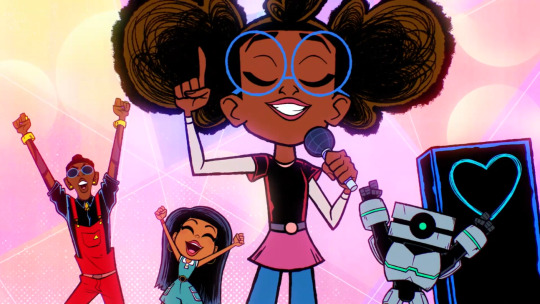
everybody outta the way look at their HEART 💙 !!! well i 💙 them sm so amped
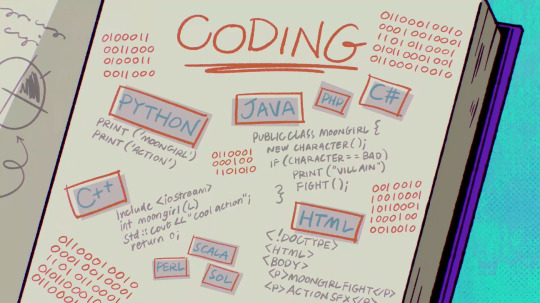
p.s. fun to put joke coding but showing different languages' formats
#💙 them sm. so amped about LOS so true bestie#''cool action'';#wish i knew more (abt) coding fr. spent a few weeks in a java class. do enjoy languages; processes; getting creative ft. tools/parameters#LOS-307#great as usual that their display screen is made so Vivacious whilest they are otherwise. a prism. person standing emoji#and that sometimes their expressiveness is in Symbols sometimes its more so in Movement perhaps along w/their voice#think the Their Default / Main Circle separating into [kind of like two eyes] only otherwise happens when Oops Dying. Like A Human Being...#what a gift they are. kicking my legs. such a delight & we can't have it all (like if they sang a line lol) but we have a lot#was going now where are they in Recurring Roles on this wikipedia page b/c that's Rarer vs. one time guest VA but they're thusly; bless....#answer is who put them under villains. technically but c'mon. & who says they can't be in multiple categories#everywhere i look the data is noncomprehensive / not granular enough lol. c c c c'mon#alright wait fine i'll check if the binary means anything for the title card with coding jokes....#[person w/slow laptop & an unresponsive [numeral one] key usually incl now voice] okay going the No (Discernible To Me) Meaning route
4 notes
·
View notes
Note
❤ The Language of Flowers | 020
❤ | Your options shall be: Sunday, Aventurine, Dan Heng, Veritas Ratio, Boothill, Jing Yuan, Blade, Phainon, Mydei, or Moze. Whoever you think suits this prompt.
❤ | Flower & it's definition: The Columbine flower | symbolize virtue, resilience, and praise of God. It serves as a symbol of fortitude, and it's sometimes given as a gift to provide courage and endurance in one's endeavors.
The Language of Flowers
Tags: Sunday x Reader, Phainon x Reader, Mydei x Reader, Fluff, Slow Burn, Comfort, Symbolism, Emotional Hurt/Comfort, Battle Aftermath, Introspection, Subtle Romance, Soft Moments.
Warnings: Mentions of War & Conflict, Mild Injuries, Survivor’s Guilt, Existential Themes, Mentions of Isolation/Loneliness, Self-Doubt & Internal Struggles, Bittersweet Undertones.

The evening aboard the Astral Express was quiet, the soft hum of the train lulling most of its passengers into stillness. You found yourself outside the passenger quarters, seated near the glass-paneled observation deck, staring at the endless expanse of stars.
Sunday stood beside you, his eyes reflecting the celestial glow. He had always been like this—distant yet present, serene yet burdened by something unseen.
You reached into your pocket, fingers brushing against the fragile petals of a flower you had carefully preserved. The Columbine was small yet sturdy, its soft blues and purples standing in contrast to the metal of the train.
"Here," you said, extending it toward him. "For you."
Sunday’s hair shifted as he tilted his head. His wings, tucked neatly behind his ears, gave a faint flutter—a silent giveaway of surprise.
"A Columbine," he murmured, taking the flower delicately between his gloved fingers. "A symbol of fortitude."
You nodded. "I thought it suited you. No matter what you've been through, no matter the weight you carry… you endure."
Sunday’s gaze flickered. There was something fragile in that moment, something unspoken between the two of you. He had spent so long believing that strength meant bearing everything alone. But here you were, recognizing his struggle, offering something small yet significant.
He exhaled, an almost imperceptible smile ghosting his lips. "Perhaps," he said softly, "endurance is easier with someone to share the burden."
Your fingers brushed briefly as he accepted the flower. It was a fleeting moment, yet profound—a quiet affirmation that he was not alone.

The battle had been long, the air still thick with the scent of smoke and steel. You sat on the worn stone steps of an ancient ruin, wrapping a makeshift bandage around a fresh wound on your arm.
Phainon emerged from the rubble, his coat fluttering slightly with his movements. He carried himself with his usual poise, yet his piercing eyes softened when they landed on you.
“You should let me handle that,” he said, kneeling beside you.
You huffed. “I can manage.”
"Of course you can," he agreed, yet his hands carefully brushed yours aside, replacing your crude knot with something more secure. His touch was gentle—a stark contrast to the ferocity with which he wielded his claymore in battle.
From the folds of his coat, he retrieved a single Columbine flower, its delicate petals untouched despite the chaos of the battlefield. He set it beside you.
"A symbol of resilience," he explained, a soft smile on his lips. "Fitting, isn't it?"
You blinked, momentarily taken aback. "You had time to pick a flower in the middle of battle?"
Phainon chuckled, shaking his head. "I found it growing in the ruins. It reminded me of you."
Heat crept up your neck. "I—That’s…"
He tilted his head, watching you with an amused expression. "What? Is the fearless warrior at a loss for words?"
You huffed, shoving his shoulder lightly, but your fingers lingered on the soft fabric of his coat. His laughter was warm, a welcome contrast to the cold air of the battlefield.
Perhaps, amid all the bloodshed and uncertainty, Phainon had given you more than a flower. Perhaps he had given you something to hold onto.

The mist-shrouded lands of Amphoreus had always carried an air of tragedy. Mydei stood at the edge of a ruined watchtower, his sharp gaze scanning the remnants of his homeland. His people had suffered. He had suffered. And yet, he remained.
You approached him quietly, the wind tousling your hair as you stepped beside him. He did not turn to you immediately, his expression unreadable.
"You’ve been standing here a while," you said softly.
"I remember when this place was whole," he murmured. "Before the war, before Nikador… before everything changed."
You reached into your satchel, pulling out a Columbine flower you had gathered on the way. The petals were slightly windblown, but their vibrancy remained.
"For you," you said, placing it in his palm.
Mydei stared at it, his fingers brushing the delicate petals. "This flower…"
"Resilience," you told him. "Endurance. A reminder that even in ruin, something beautiful can still bloom."
For a long moment, he said nothing. Then, his grip tightened around the stem—not enough to crush it, but enough to hold it firmly.
"...Thank you," he finally said, voice barely above a whisper.
His other hand, reached for yours. A silent acknowledgment. A quiet vow.
You squeezed his hand in return.
You would endure together.

[Navigation]
#x reader#honkai star rail#hsr#honkai star rail x reader#hsr x reader#sunday x reader#sunday x you#sunday x y/n#phainon x reader#phainon x you#phainon x y/n#mydei x reader#mydei x you#mydei x y/n#fluff#symbolism#slow burn#comfort#emotional hurt/comfort#battle aftermath#introspection#subtle romance#soft moments#hsr x you#hsr x y/n#hsr x gender neutral reader#sunday honkai star rail#phainon honkai star rail#mydei honkai star rail#honkai star rail x gender neutral reader
96 notes
·
View notes
Text
shit NOW look EINSTEIN their falling.
(SBAHJ 11-14)

In the days away from Homestuck, I’m catching up on Sweet Bro and Hella Jeff’s recent updates – the callback-filled ‘Shoping’ and the first three instalments of the Nancho Party arc. As usual, the strips are densely packed with symbolism and provide a biting criticism of both capitalism and our modern media landscape.
‘Shoping’ features the second appearance of stalwart Geromy, who first appeared in strip 7, and appears to be friends with Sweet Bro and Hella Jeff without participating in their antics – perhaps a parental figure taming their worst impulses. Here, he accompanies the titular characters to the grocery store, where Sweet Bro or Hella Jeff suffers from choice paralysis in the canned-beans aisle, entering a meltdown over price discrepancies and calling for the manager. The other title character slowly fades from view as he provides exposition on how the grocery trip resolves.
During his meltdown, one image of the red character is flipped and recycled from strip 7 – the green ‘SOCKS MAN’ imprinted across his face – and both strip 7 and ‘Shoping’ end with the blue character slowly fading from view while the red character is emotional. Author Dave Strider has often associated himself with the color red, and may be expressing his own insecurities by depicting the blue character leaving every time the red has complicated feelings.
In ‘Shoping’, the red character’s feelings are justified – it’s true that goods in the grocery store are often priced arbitrarily, and that there may be subtle differences between different brands of canned beans, or no difference at all. Food marketing often has less to do with taste and more to do with creating customer loyalty and a brand identity, and lots of brands are competing to do this despite selling functionally the same product, so it can be overwhelming to go shopping under these conditions. However, the red character’s extreme reaction involves both the manager and police, showing that he’s uncertain where to target his aggression, likely due to the depersonalized nature of capitalism where the cause of wide-reaching issues isn’t readily apparent. Seeing the red character come to terms with this issue in real time make this maybe the most emotionally resonant SBAHJ strip yet, and that’s saying something.
Comic 12 introduces the ‘Nancho Party’ arc, which Strider also announced on his blog, saying that ‘sometimes when you want to get your nacho on theres some shit you just dont need so this is a shoutout to that / also this is a 10 part series maybe’ (Strider, 24 Feb 2010). It’s common for webcomic artists to begin with one-off instalments and then graduate to a longer arc, and this is Strider’s first attempt at a recurring storyline. It’s a bold move, but good to see him stretching as a creator, and its opening strips are really strong. The title page calling back to the first ever SBAHJ strip is a nice touch too, recognizing its roots at this turning point for the project.
In the arc itself, Sweet Bro or Hella Jeff drops their plate of nachos, scared by the sudden appearance of their blue friend. The blue character says, “who were you expecting…. the easter bunny>”, but his art is copy-pasted from comic 9, overlaid with the text ‘i could tell you but but i'd would have to kill you’. The blue character clearly has a secret, and this overlay text feels like a clue – perhaps the blue character really is the Easter bunny, or some other sort of supernatural creature, but can’t tell his friend about it yet.
I think that’s a teaser for a future arc, though – in this one, the main focus is the cheesy nachos that fall throughout the first two strips, until the blue character takes a Polaroid picture of them. As they fall, they change art styles, going from MS Paint-style drawings to edited photographs. The color, image quality, and even orientation of their movement changes. It makes me think about the life cycle of the nacho – first, someone needs to grow the maize, treat it with alkali, bake a tortilla, cut it into triangles, bake it again, bag it, ship it, sell it, prepare it with cheese and toppings, and bake it one final time. All that work for a simple plate of nachos, and all those different physical forms that it takes along the way – all to disintegrate back into the earth almost immediately, whether or not they’re eaten. When the blue character takes a Polaroid picture of the nachos, it provides a commentary on preservation. It’s possible to keep food in what we often think of as its ‘perfect’ state – prepared and ready to eat – but at the cost of it never fulfilling its purpose. This can actually be extended to other preservation efforts, like a collection of household artifacts in a museum, rare books stored in glass cases in a library, or showrooms in the home goods store IKEA. By showing these nachos eternally in the stasis of their fall while the characters go on talking around them, ‘Nancho Party’ dares to ask what good there is in preservation without utility. More broadly, it questions the impulse towards theory and discussion during an urgent problem, suggesting that action may be preferable to analysis.
At the end of comic 13 – still mid nacho fall – is ‘THE, RECIPE ZONE’ featuring a near-unreadable screenshot of a recipe for Nachos Grande. This recipe has 4.5 out of 5 starts, taking 10 minutes to prep and 10 to cook, and featuring classic ingredients like beef, onions, tomatoes, jalapenos, cheddar cheese and salsa. Presumably the red character was following this recipe prior to the fall, and is now reflecting on the twisted mockery of his hard work. It’s a great example of playing with the timeline, and I don’t think this would be so effective if the arc opened with the faded recipe, but appearing here it’s a gut-punch reminder of how much effort the red character put into his nachos and how devastated he must be at their loss. Knowing about his existing problems going to the grocery store, this may be even more tragic, as it’s not easy for this character to simply go out and buy more ingredients.
Comic 14 also features a tiny Geromy at the end, perhaps hinting at a greater role for this character in updates to come. I’m definitely intrigued by Geromy and would like to see him explored in the same depth as the titular characters, but keeping him as a mysterious figure is compelling in its own way. I worry that Strider doesn’t have the sensitivity to write a character of color well, so perhaps things are best as they are.
Overall, these updates have a preoccupation with food that SBAHJ has never had before. They question where our food comes from, how it’s prepared, and how often we waste it. It’s likely that Strider, poised to leave this world and enter another, is contemplating the material reality of the body from a new perspective. He’s wondering where sustenance might come from when he enters the Medium, and also reflecting on how little he knows about the origins of food outside of buying it in pre-packaged forms at a local store. But the thought of what he's losing when a meteor destroys his home clearly weighs heavy on his mind, and carries through to his work.
#homestuck#sbahj#reaction#DISCLAIMER: THIS IS A JOKE POST !!!!#dave likes to keep his fans convinced of his creative persona's sincerity (p.326)#so here you go dave this ones for you. im so convinced#chrono
24 notes
·
View notes
Text
Secrets Between Stars and Stones: The 1970s Fascination with Aliens, Egypt, and the Supernatural
Introduction:
The 1970s were more than just a decade of disco balls, bell-bottoms, and rebellious youth movements. Beneath the surface was a deep fascination with the mysterious, the unknown, and particularly with a potential connection between human history and extraterrestrial civilizations. In music, film, and literature, the idea flourished that the ancient world and the supernatural had left us messages—available to those willing to look closer. Works like the film Starship Invasions and The Alan Parsons Project album Pyramid capture the extent of this curiosity and how it still echoes in popular culture today.

The Hidden Motif: Benevolent Watchers in the Depths of Space and Sea
Since the early days of science fiction, the idea of alien beings secretly watching over humanity—hidden in remote parts of Earth or the cosmos, perhaps in the ocean’s unexplored depths or the icy plains of the North Pole—has been a recurring theme. In the 1970s, this notion was popularized in films and books portraying benevolent, advanced aliens either protecting humanity from itself or monitoring it for “maturity.”

The Legacy of Ancient Egypt and the Call of the Pyramids
At the same time, fascination with ancient civilizations like Egypt was resurging. It was the era of Erich von Däniken and other authors who speculated that extraterrestrial visitors might have built or influenced pyramids, temples, and other structures. Egyptian heritage became a symbol of hidden wisdom and transcendental power in film and music. The Alan Parsons Project album Pyramid draws on this intrigue: mystical sounds and lyrics steeped in references to Ancient Egypt pull listeners into a world filled with starry and stony mysteries—a world that leaves us questioning whether the pyramids are more than mere burial sites for pharaohs.
Zeitgeist or Coincidence? Pop Culture Between Science and Mysticism
How is it that so many works focused on these themes within a few short years? Was it coincidence, or was there a collective “hunger” for answers to life’s bigger questions? The 1970s were marked by social upheaval and a newfound openness to spiritual and esoteric topics. Scientific breakthroughs in space exploration and deep-sea research also fueled interest in exploring the unknown. The science fiction of that era bridged emerging science with ancient myths, opening doors to fascinating speculations.

“Those Who Have Eyes to See…” – An Invitation to Look Deeper
Embedded in all these works was a subtle invitation to look more closely, as expressed by the biblical phrase, “He who has eyes, let him see; and he who has ears, let him hear.” Audiences of the 1970s were meant to discover for themselves what lay beneath the surface of these stories. The art of the time urged people to challenge conventional notions of reality and history and to embrace a world full of hidden connections and possibilities.
Conclusion: The Pyramids as Time Capsules of an Era
The fascination with Egypt and the unknown left its mark on the pop culture of the 1970s. Even today, decades later, we explore these mystical themes in films and series, inspired by the notion that the universe holds far more secrets than we can imagine. The pyramids, Egypt, and the supernatural become time capsules of an era—a testament to humanity’s endless search for its place in the cosmos.
Final Thought:
The invitation remains, just as it did back then, to look a bit closer. Are the stories that captivate us purely fiction, or are there hidden truths that we’re simply missing? Sometimes, it’s only a small step from the incredible to the possible—a step you take only if you have eyes to see and ears to hear.
Before you dive deeper into the mysteries of the cosmos, take a moment to explore the sounds of Between Zone. Let our music transport you to realms beyond the stars—listen now on Spotify and discover the soundtrack to your journey through the unknown!
#pop culture#science fiction#extraterrestrials#pyramide#the alan parsons project#1970s#classic film#hiddenconnections#look closer#Zeitgeist#Spotify
16 notes
·
View notes
Text
The Art of Beauty ~ Post-BoTW Zelink
words: ~900
read on ao3
“Your hair’s getting long.”
Link’s eyes flutter open, drawn by the words from the soft lull of his meditation. It was something that Zelda had recommended he try after the Calamity, when he couldn’t sleep through the night and was restless all day. It helps. Clears his mind, helps him focus. He thinks about Zelda, or the comfort of the Gerudo sun, or nothing at all. It’s nice.
Do you like it? Link signs. He tips his head back, smiling as the princess comes into view upside-down. She matches his expression, impossibly elegant.
“I do.”
There’s no school today– the children are allowed the weekend to play and so Zelda is too, the duties of teaching briefly forgotten. She sits down behind Link and curls the ends of his hair around soft fingers.
“I do believe it’s longer than mine.” She laughs, bright and easy. Her hair is cut short now. She had cut it after moving to Hateno, eager to rid herself of the symbol of royalty and opt for something more practical. Link had helped her. This new style falls in a gentle frame around her face, barely brushing the line of Zelda’s jaw. She tucks it behind her ears or braids it into a band around her head when she wants it out of the way– Link likes it best loose. When she’s just woken up in the morning and it falls over her face, glowing with sunlight. Sometimes she’s so beautiful he can’t even bear to look at her.
“It’s lovely.” Again, her words draw him from thought– she’s awfully good at that.
Link feels his cheeks flush, warm and sunny, lips quirking up into a smile as he casts his gaze down to a small patch of wildflowers in front of him.
“Thank you, Princess.”
Absently, as if she doesn’t quite notice what she’s doing, Zelda begins to gather honey blonde strands of Link’s hair and weave them together into intricate little braids that cascade down to the tops of his shoulders. She doesn’t fasten any of them, letting the plaits trail off loosely at the ends.
Link doesn’t even notice that his eyes have fallen closed. Zelda’s hands are deft and sure, trained in the art of beauty. She touches him like he’s a delicate thing. Her hands card through soft hair and her fingertips brush ever so lightly against his scalp, like some sort of worship. It makes Link want to cry. She has shown him impossible kindness, has never once wavered in her reverence. Perhaps the only one close to him, now, for whom that is true.
“Why don’t you wear your hair up more often?” Zelda asks gently, working sections into a braid that follows the curve of Link’s hairline above his ear. “It looks so beautiful.”
Link feels his cheeks begin to flush, the heat of the sun nothing compared to the warmth of her compliments. Not used to it, he signs, almost embarrassed, don’t know how to make it look nice.
Zelda’s careful, practiced movements never falter. She begins to join two braids at the back of his head, a perfect golden circlet. “Your mother never showed you?”
Link thinks better than to shake his head, humming a small dissent.
“Well, it’s not too late,” Zelda announces. She picks a small flower from the ground next to them, a little blue blossom that mimics the color of Link’s eyes, weaving its stem through the braid. “I can teach you.” Another flower is plucked from the grass to adorn Link’s hair. “I know my hair’s quite short now, but it should still be long enough to learn.”
Link’s eyes widen. The two of them had slept in the same bed every night since the Calamity. They share every meal, travel the world together, tend to each others’ wounds– yet still, the simple idea of braiding her hair makes the breath leave his lungs. He has to take a deep breath before even thinking of responding.
“Yes, please.” Link swallows, his heart suddenly pounding, the flush on his cheeks only growing darker as Zelda laughs.
“I’m sure you’ll be very good.” Zelda reaches around to press a soft hand to Link’s cheek and encourage him to turn towards her. He follows the gentle direction obediently, eyes wide and face warm. The corners of Zelda’s eyes crease with smile lines. Link can’t wait to watch them grow constant with age.
She beams at him, thumb tracing a soft arc over her knight’s cheekbone.
“I think it suits you.” Zelda leaves no room for argument.
Link can’t even summon his voice to say thank you. He signs it instead, hands more sure than his voice could possibly be.
Zelda lets her hand drift away from his face after a few moments. She lets out a sigh and falls back into the grass next to Link, smile quirking into mischief as she tugs on the back of his tunic to persuade him to join her.
It works, of course.
Link lays back alongside her and lets his eyes drift shut once more. The pleasant buzz of Zelda’s touch still plays on his skin, and he feels his heart skip a few beats when she reaches over to lace her hand in his. Not quite an embrace— just a few fingers tangled together, childish and sweet. He could stay like this forever, he figures, sun-warm and happy with her.
At least a few years should suffice.
#zelda#zelda totk#zelink fanfiction#zelda tears of the kingdom#princess zelda#link#totk link#pre totk#post botw#Hateno village#domestic zelink#loz#legend of zelda#the legend of zelda#zelink#link x zelda#zelda botw#zelda breath of the wild#zelda fanfiction#link totk#botw link#link loz
92 notes
·
View notes
Text
Everything You Need to Know About Corteiz: The Rising Star in Streetwear Fashion
Introduction
In the world of streetwear, certain brands manage to stand out not just because of their products but due to their message, exclusivity, and the community they build around them. One such brand that has been making waves recently is Corteiz, also known by some as Cortiez.
This London-based streetwear label has caught the attention of youth, celebrities, and fashion lovers alike. But what exactly is Corteiz? How did it become such a big name in the fashion industry? Let's dive deep into the world of Corteiz and explore what makes this brand unique.
What is Corteiz?
Corteiz is an independent streetwear brand founded in the United Kingdom. Established by a creative figure known online as Clint, Corteiz started as an underground movement, slowly growing into one of the most talked-about brands in urban fashion.
The brand is known for its raw and rebellious approach. Unlike big fashion corporations, Corteiz operates with a strict "members-only" philosophy, which adds an element of exclusivity to their products.
Even though some might refer to the brand as Cortiez, the correct name is Corteiz, and it carries a strong message about standing against the norms of the traditional fashion industry.
The Origin of Corteiz
Corteiz was founded around 2017 by Clint419, a London-based designer and cultural icon in the streetwear scene. Clint began the brand with a bold vision: create a label that speaks to the streets, by the streets.
At the start, Corteiz was not about profit or mass production. Instead, it was about representing a certain lifestyle, attitude, and resistance to mainstream trends. This rebellious DNA became the foundation of Corteiz's identity.
Why Is Corteiz So Popular?
1. Exclusivity
One of the main reasons Corteiz or Cortiez is so popular is its exclusivity. The brand has a password-protected website, and only those who have the password can buy their drops. This tactic creates a sense of community and scarcity, making each item highly desirable.
2. Limited Drops
Corteiz does not follow the typical fashion calendar. Instead, they operate on surprise drops, with limited quantities available. These drops sell out within minutes, adding to the hype and demand.
3. Cultural Relevance
Corteiz is deeply connected to street culture, music, and sports. The brand has been seen on celebrities, influencers, and athletes, making it even more influential among young people who look up to these figures.
4. Authentic Messaging
Unlike some brands that lose their roots as they grow, Corteiz remains authentic to its message of rebellion, community, and self-expression.
The Corteiz Logo and Its Meaning
Corteiz's logo features an Alcatraz-inspired prison tower. This symbol represents freedom and breaking out of societal cages. It reflects the brand's belief that people should not be trapped by traditional standards or expectations.
For Corteiz, it's not just about clothes — it's about a mindset. The logo is a statement of independence and resilience, something that resonates deeply with their audience.
Popular Corteiz Products
1. Corteiz Tracksuits
Perhaps the most iconic product from Corteiz is their tracksuits. Known for their quality, unique colorways, and bold logo placements, these tracksuits have become a symbol of status in the streetwear community.
2. T-Shirts & Hoodies
Simple but powerful, Corteiz's t-shirts and hoodies carry strong graphics and the brand's core messages. They often feature slogans, logos, or artwork that reflects urban life and rebellion.
3. Accessories
From hats to socks, Corteiz also offers a range of accessories that allow fans to incorporate the brand into their daily outfits.
The Hype Behind Corteiz Pop-Up Events
Corteiz has become known for its unorthodox pop-up events. These are often announced last-minute, in secret locations, creating a buzz online and offline.
At these events, fans sometimes line up for hours or even days, eager to get their hands on exclusive items. Such strategies help Corteiz build a strong, loyal following, while keeping the brand unpredictable and exciting.
Celebrity Endorsements and Collaborations
Though Corteiz is an independent brand, it has received attention from major celebrities. Figures like Drake, Jorja Smith, Central Cee, and many more have been spotted wearing Corteiz.
These moments create viral online conversations, further boosting the brand’s reputation.
While Corteiz has done some collaborations, they are always on their terms. The brand is careful not to dilute its identity by partnering with just anyone.
Social Media Strategy: Keeping it Real
Unlike mainstream brands that flood social media with polished ads, Corteiz keeps its content raw, unfiltered, and real. This approach resonates with their audience, who value authenticity over perfection.
Corteiz's Instagram page often features user-generated content, behind-the-scenes moments, and real street culture. This keeps the brand relatable and close to its roots.
The Future of Corteiz
Given its current trajectory, Corteiz is expected to continue dominating the streetwear space. But what makes Corteiz different from other rising brands is that it doesn’t chase mainstream success. Instead, it stays true to its underground, rebellious spirit.
This approach is what makes Corteiz special. It’s not just a clothing label; it’s a cultural movement that empowers the youth to be bold, unapologetic, and authentic.
Final Thoughts
Corteiz, or as some might say Cortiez, has proven that you don't need to follow the traditional rules to succeed in fashion. By focusing on community, exclusivity, and raw authenticity, the brand has created a loyal fanbase that eagerly awaits every new drop.
Whether you are a fashion lover, a streetwear enthusiast, or someone curious about the brand, Corteiz is a perfect example of how culture, fashion, and identity can come together to create something truly impactful.
0 notes
Text
STOP IT THOSE ARE THIRD GENERATION OPEL KADETTS >:( IT EVEN SAYS SO ON THE LAST ONE'S PLATE! LOOK! EVEN WIKIPEDIA SAYS-

Hm. I guess the world has a lot of very different views on what this is called.
You can just feel a weird story coming, can't you. And indeed, our story starts in '73, with the other war America is losing.

The United States are having an existential crisis over the discovery that oil is a finite resource, the hours spent lined up in front of starving gas stations have given Americans time to realize cars that use less of it are neat, so their own country's cars are getting positively barbecued by 'imports', i.e. cars made abroad. Some could argue it took 'domestic' brands around a decade to cobble together decent competition, and in that timespan foreigners were left free reign to gather an unprecedented foothold - American brands would never return to their domination of their home market. The local automotive output was so dire they became known as "malaise era" cars: the larger offerings that practically symbolized the country got shrunken in size and neutered in sportiness to cope with the wimpier engines caused by the new emission standards, and, while the foreigners moved ungodly numbers of the fuel efficient small cars they'd been making all along, yankees were pathetically scrambling to figure out what the hell 'small car' meant. And here's a hint: if you're bragging about how large it is you've not got it yet.

Oh, and it gets worse! But to learn just how much, since even those familiar with my engine layouts post may not have a sense of scale for engine size or even know precisely how it's measured, we must make a brief stop at the explanation station! Choo Choo! The combustion chamber, the volume above the piston in which the combustion happens, shrinks and expands as the piston goes up and down its travel (whose length, you'll love this one, is called 'stroke'). The change in volume between the top and bottom of the cylinder's stroke, aka the volume of air the cylinder's movement displaces, is called cylinder displacement. Add up the displacement of every cylinder and that's your engine displacement! See? That was easy!

As this stolen and pefrectionistically tweaked graphic points out, displacement is expressed in two ways: - cc, or cubic centimeters - ci, or cubic inches While in ci even large displacements remain in the hundreds, in cc even small displacements reach the thousands, so what in ci is a 250 engine in cc would be a 4096 engine, which really lacks a ring to it. Usually, then, such an engine would be called a 4.1, being pretty much 4.1L because 1L is 1000cc - how cool is having a measurement system codified by people who actually knew what they were doing? Really guys you should give metric another shot sometime.
And now, an example for scale: I happen to own one of the small cars that was whipping yankee ass the hardest (bar perhaps the Viet Congs' jeeps) - a first generation Volkswagen Golf, that reached their shores as Rabbit. It was sold with four cylinder engines, the wimpiest -that would be mine- a 1.1L, the mightiest a 1.6 - and the spicy sporty version, the GTI, with its splitter and wider fenders and sick ass wheels made out of the P of tire supplier Pirelli...

...that little riot, in its last years, got upgraded to -huzzah- a 1.8!
The Pacer, meanwhile?

Okay, it was also offered with six cylinder engines as small as 3.8L -not even four times the size of mine!- and the V8 was just for those who wanted something faster. Which made me wonder: if the GTI hit 100 km/h (that's 0-60 for you yankees) in 8 seconds, what'll the V8 Pacer's time be? And so I looked it up, got lost in laughter, and desperately looked for other figures because they cannot possibly be talking about the V8, and then realizing that no, the V8 really did 0-60 in fourteen seconds, and laughing for other minutes.
I could bring more examples, but in short, to call the American small car offerings especially inadequate would be charitable. But what if they didn't try to make a decent small car? Wouldn't it be better to just let the foreigners figure it out, and then ship some units over to sell under a brand of their own? Well, that's the idea behind captive imports, the name given to vehicles born through this specific form of badge engineering. And what better foreign manufacturer for General Motors to hit up than Opel, the German vehicular colossus that GM happened to own and already have been importing cars of, selling them through Buick dealers! So essentially, GM needed dear god anything acceptable badly, and decided to bring over what someone else had cooked up and spotted the right business from inside the house. However, the Steamed Hams parallels end here, because they openly sold it as the Opel Kadett it was. While it still was.
But due to that whole crisis thing, the Deutschmark rose in value relative to the American dollar (so, for the economically inept, the same amount of Destumchrak cost more dollars to obtain) such that, while Opel asked for the same Dusthemcrhak for each car, the cost to Buick rose past sustainability. And, to save you the short story about the boss's lover answering the phone, they did what you do when a supplier's nationality causes their product to skyrocket in cost: find a supplier elsewhere. See, normally badge engineered cars can be split between those jointly developed by two manufacturers and ones merely picked up by another manufacturer after the fact. This, instead, was both, since Opel developed it with help from Japanese manufacturer Isuzu, which themselves made and sold it as the Isuzu Bellet Gemini at first and later just Isuzu Gemini. So Buick just started buying units from them instead. However, to denote that the car was the same but different (read: more cheaply built) they cobbled up the name Opel by Isuzu. After a year, someone must've realized that name was ass and demanded it be changed - presumably forgetting to specify to replace it with a non-ass one, since it got changed to Buick Opel.
And no one gave a shit. Because really, no one gave a shit about the car in general, reserving their attention for more established alternatives like the Toyota Corolla or the aforementioned Rabbit. So Buick devised a cunning strategy: the Buick Opel 5 Car Showdown - also known as possibly the hardest I ever laughed at automotive advertising, and pretty much the only reason I actually made this whole post.
Essentially the idea was to evaluate the Buick Opel in various showdowns against compacts people actually gave a shit about and at the end of it score them overall. Thing is, the problem with such a test is that it has to be clearly impartial for its conclusions to be worth anything. "Oh, so was it, like, just so laughably rigged?" No. Exactly the opposite. It was laughably not rigged.


Yeah.
To be fair, there is an area in which it came out on top, and the ad frames this as a result that proves it's a car worth considering just as much as every other. Really, it's hard not to be endeared by the candid honesty of this copy.


Of course, none of this makes it much less hilarious to imagine whoever worked at marketing for Volkswagen grabbing the paper and finding out General Motors had bought a three page ad to tell the world the Rabbit was better than their own car.

Easiest paycheck of their fucking life.
Okay, now that you've seen the ads about how General Motors said my car is better than theirs, you can go. Or, if "GM then renamed the car Isuzu I-Mark" sounds like riveting content to you, hop under the Read More, because hoo boy is there some weird shit.
One place where our poor little car fared better was Australia, where it was sold as the Holden Gemini, since Holden, as I hinted at previously, was the Australian arm of General motors, just like Vauxhall is the British arm of it. Vauxhall has for almost all its life just been a badge they slapped on Opels, and Holden has been that to varying extents, but due to the Australian obsession with a type of car that just doesn't sell elsewhere they've always had some bespoke stuff going for them. The tables turned this time, it would seem, since the Holden Gemini was just a rebadge (albeit of the Isuzu model) and the Vauxhall Chevette was a different model, with a nick of unique styling about it in the form of a different front...

...perhaps more reminiscent of the Chevrolet Chevette sold in North America.
Wait, why's the name in green? Was General Motors selling Americans the same car twice? Well, not quite.

Though built upon the Kadett's platform, this is a somewhat different car. And we could argue about whether it's fair of Wikipedia to cite that under a different name the Kadett was known by. We could, if this was what it was included over. But it wasn't. Because the Brazilian Chevrolet Chevette was the same car. In the first four pictures of the original post you can faintly make out a Chevette badge next to the right headlight. Here's a picture of its restyling and HOLD ON A SECOND

Yeah, these cars were a big cauldron of mess. For another example, since Holden wanted to sell wagons and panel vans, which Isuzu didn't make, those were derived from, respectively, the Opel Kadett wagon and the Vauxhall Chevette panel van, onto which Gemini fronts were grafted.
And that's not even all the places these were made and sold in! South Korean manufacturer Saehan struck a deal with GM to sell these as Seahan Geminis (and exporting them as Saehan Birds), and when they updated it the name changed to Saehan Maepsy, which when Saehan got bought by bigger South Korean manufacturer Daewoo became Daewoo Maepsy, which later got updated again into the Daewoo Maepsy-na (new)...

and GM Argentina made and sold the car as the Opel K-180.

And then in 1992 it got even weirder, when Brazil made a slight update aimed at the Argentinian market and called it GMC Chevette.

You know. GMC. The truck/SUV/van/bus brand that, in its 112 years of existence, has never been stamped on a car before or since the 3 year run of this thing. Imagine finding out that, for three years in some relatively random country, Ferrari sold a pickup. It's starting to feel like someone warned automotive manufacturing the world over of approaching alien invaders that could only be warded off by enough names for the Opel Kadett.
Unfortunately, the Wikipedia page foregoes mention of the heroic efforts of Uruguayan operation Grumett - Yah! Here's an estate called Grumett 250M Rural! Yah! Here's an update of it called Grumett Gazelle Estate! a coupe called Grumett Coupe! Yah! Here's an update of it called Grumett Sport Coupe! Yah! We export these as Grumett Condors! Yah! Take that, extraterrestrial plurikadettonomophobes!
This mess of different manufacturers involved meant that all those different names, once the manufacturers worked on updating and replacing the model, ended up on completely different cars!
Here's a 1980 Opel Kadett/Vauxhall Astra...

...here's a 1983 Chevrolet Chevette...

...here's a 1984 Daewoo Maepsy-Na...

...here's a 1984 Opel Kadett...

...here's a 1985 Isuzu/Holden Gemini...

...here's a 1990 Isuzu Gemini...

...and here's a 1992 GMC Chevette.

You somehow get the vibe that Argentina wasn't doing quite as well as Japan.
So, this was the story of a world car and the ways various parts of the world interpreted it. And if you thought it was excruciating to read, try writing the damn thing. Not just in terms of the sheer work of getting any sort of narrative flow going, it was a mess to research - the info could get unclear or even contradicting, "it's more complicated than that" was a common refrain, and there seemed to be a near endless supply of tidbits that- wait, what's that? It's too big for a bird, too fast for a plane... oh no... it's a stereotypically-shaped flying saucer!!!
*the unrealistically humanoid aliens dive towards the helpless crowd around me, but as my eyes light up with the fierce courage of the chosen one, I rush towards the oncoming ship against the wave of people I urge to stand back, and when it seems close enough, I climb atop a conveniently placed statue of a riderless horse and fill my lungs at peak capacity*
IN MALAYSIA IT WAS CALLED OPEL CHEVETTE!
*the ship engulfs in flame, loses control and crumbles gracelessly onto the street and surrounding buildings, causing four debilitating injuries and 37 first degree burns*







Chevy Chevette Coupe
#oh no the tags show up under the post even if you don't click the read more they're gonna spoil the post#quick if you think you stand a chance of giving a shit and haven't opened the read more do it right now before you read these next tags#chevrolet chevette#opel kadett#amc pacer#volkswagen golf#volkswagen rabbit#isuzu bellet gemini#isuzu gemini#opel by isuzu#buick opel#toyota corolla#isuzu i-mark#holden gemini#vauxhall chevette#saehan gemini#saehan bird#saehan maepsy#daewoo maepsy#daewoo maepsy-na#opel k-180#gmc chevette#grumett 250m rural#grumett coupe#grumett sport coupe#grumett condor#vauxhall astra#opel chevette#i am very glad they increased the max number of tags on a tumblr post to 30#because that's exactly how many these are
153 notes
·
View notes
Text
mid sem objects 2

Japanese Omamori charms:

These are Japanese amulets that you can get from both Shinto shrines and Buddhist temples. Shinto and Buddhism are the two major beliefs in Japan and its shrines and temples are still very much treasured and visited in Japan. I heard you are supposed to return them after about a year as the idea is that you borrow the luck temporarily and at the shrines or temples they do the steps to return the luck back to the gods. However, as I can't go to Japan I still have heaps of these at home. I don't know maybe I'm terribly cursed.
Furoshiki Cloth:

A furoshiki is a square piece of cloth that originates from I believe sometime before the 10th century that is used to wrap and carry goods or for decoration. They tend to have traditional Japanese patterns or have lots of significant seasonal prints. I got this right before I first moved to New Zealand back when I was 6. I used it to wrap my clothes and shoved it into the suitcase. It's important for me as it's nostalgic and reminds me of the biggest turning point of my life. It almost feels like a ticket to flip my life around. Japanese traditional patterns and the importance of seasons in its culture fascinate me and I was inspired by it a lot, particularly in the yr1sem1 concertina project and yr2sem1 publication.
Old painting series:

This is the art board from the painting class back in year 13. This is where I started looking into the Impressionist art movement in more depth and practising it through my own works which I think triggered a lot of works and stylistic choices. I also mentioned in the formative presentation that this was heavily inspired by Studio Ghibli or other animation movies and their background art. Still to this day, I take great inspiration from Impressionism and its ideals or concepts. I looked at some other contemporary artists who had a significant impact on me such as Nathaniel Dorsky, Eric Roux-Fontaine, Rex Preston, Toshio Ebine, Naohisa Inoue, Reynier Llanes, etc.
Naohisa Inoue Book:

I first saw Inoue's works through the movie Whisper of the Heart by Studio Ghibli. His works were featured and animated in. a section of the movie and Hayao Miyazaki states that he is very fond of Inoue's paintings. He also created a short film solely inspired by (and used) Inoue's works called Iblard Time (Iblard Jikan). I was personally very influenced by his works, particularly in years 12-13 for painting boards. Furthermore, this has led to my interest in Japanese arts and culture as well as Impressionism. I studied a lot of his painting techniques and applied them to my works. I think it fed my experimental artistic thinking and my love for fantasy and nostalgia.
Concertina Project:

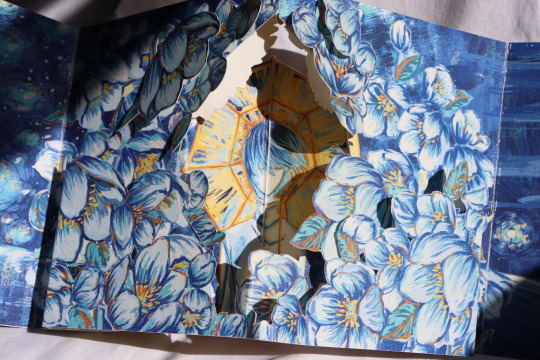
Self-Matters concertina project was the first ever studio paper that we worked on in university and it challenged us to visually express our self-identity. The main keyword that sparked my ideas was 'intangibility' and I approached the design thinking more about non-holdable identities like birthdays, fortune tellings, and Japanese culture. The fact that it was the first project I did in university makes it significant as a major turning point, but it also made me dive extremely deep into my identity and I think it took my thinking to places I had never been before. I think it also has a lot of influences from all of the creatives that I have mentioned so far, even ones that I didn't put in the presentation. It has so much symbolism scattered across the whole concertina that cannot be explained in any few words. As I work through my university degree I keep coming back to this project as it reminds me of my origins in a language that is incredibly personal to me and me only. It's like a treasure box of intangible unspoken stories that I will always hold, perhaps never told.
0 notes
Text
“enjolras killed his friends and was also dumb and wrong”
The interpretation that Enjolras was a “naive little rich boy who got all his friends killed” is…certainly not new to this fandom, but it sometimes pops up in such an atrociously misinformed incarnation that I feel obliged to address it.
This interpretation itself is of course completely wrong, though perhaps encouraged by certain adaptations. But the idea that the rebellion failed because Enjolras “had no idea how to organize a revolt” and he just “ran around wearing a sash and shouting slogans at people”, and particularly that he “thought he could tell the working classes how to live better” is, frankly, appalling.
Enfranchisement during the July Monarchy was severely restricted, as voting rights were only given to males over 25 who paid 200 francs in direct taxes a year. So only about 1% of the population could vote—considerably less than even just the population of Paris alone. Since the voting pool was limited to wealthy, landowning men, elections swung conservative, and the regime supported policies intended to enrich the wealthiest bourgeoisie.
Not only were Enjolras and his friends disenfranchised, but they lived under an authoritarian regime and faced political repression and censorship. Do you have something called “freedom of speech” or “freedom of assembly”? Republican publications were routinely shut down by the government, and clubs and assemblies such as theirs were illegal. Members faced police raids, potentially large fines and months in prison.
Republicanism in the 1830s was a primarily working class movement. The majority of insurgents in the June Rebellion were working class. Enjolras, apart from also being a fictional character, is not a major player in the movement. He is the leader of a very small group that is affiliated with a few other groups in the area, and becomes the leader of a minor barricade during the June Rebellion. He is certainly not the orchestrator of the entire revolt, and it is ridiculous to suggest that, even fictiously, the reason for its failure is his own personal naivety.
You can debate the causes of the failure of the June Rebellion—of the insurgents to not march on the Hôtel de Ville or of the National Guard to not join the insurgents, or the brutality of the government’s reaction—it was not the failure of “the People” to rise, of whom an estimate of almost 400 were killed or wounded. Nor was the cause naive students running around inciting complacent workingmen to riot—rather a cholera epidemic that killed thousands, exacerbated poverty, and killed two prominent politicians.
If the failure of any people to rise is to be blamed, it might be the bourgeoisie, whom Hugo suggests were content with the gains of the liberal July Monarchy.
Enjolras is a highly effective leader. He’s a logical commander who takes care to not sacrifice more resources or men than necessary and is an exceptional (and most likely experienced) street fighter. His fictional barricade is inspired by the famous battle of the Cloître Saint-Merry in the same rebellion, which was used as symbol of republican martyrdom by later republicans. Hugo wrote it that way in order to illustrate what he saw as the sublimity of these men and the moment—he certainly did not see it as pointless or “ridiculous”.
Finally, the idea that Enjolras was responsible for the deaths of his friends or “dangerous to himself and his compatriots” is my most beloathed fandom invention. They were grown ass men who were just as devoted to the cause and just as willing to die for their ideals. Combeferre explicitly expresses his and the group’s willingness to die, and Grantaire obviously chooses to die with him. They were all capable of making their own decisions and it is weirdly infantilizing to suggest otherwise.
Why are people are so eager to make a mockery of Enjolras and his ideals?
Sources:
Ballots and Barricades, Aminzade
Barricades, Harsin
Proletarian Nights, Rancière
663 notes
·
View notes
Text
Devil ~ Anna Maria d'Onofrioh Tarot

Le Diable in French may be the Christian Devil which stands for absolute evil. But it can also be a mischievous and unruly, but not totally malevolent, demon or imp. New decks in the English tradition have adopted the first interpretation and show a frightening demon. But in the Tarot de Marseille the figures are smiling, and they look bawdy and shameless rather than evil. The animal-like feet and horns resemble medieval descriptions of the Devil in popular beliefs and witch-hunter’s manuals. But they may also relate to Pan, the Greek god of shepherds who represents the wild forces of natural passion. The image closely resembles an old Babylonian tablet known as the “Burney Relief,” kept in the British Museum and dated around 1800 BCE. Some believe it represents Ereshkigal, queen of the underworld. The Devil mocks conventional logic The Devil (Card 15) is sometimes linked to The Pope (Card 5), with a similar structure of one large and two small figures. But we can also see its upper part as a distorted mirror-image of the Justice card. The Pope and Justice represent the socially established and accepted values, while the Devil represents their opposite. The stuck-out tongue echoes the male sexual organ at the center of the card, expressing mockery and defiance of social conventions and norms. The large figure is also full of contradictions: a human body with animal elements, and a male sex organ with female breasts. The Devil can represent anarchism, subversion, and defiance of conventional norms. It can also stand for inner paradoxes and contradictions, which go beyond the traditional logic and the simple binary classifications of good and bad, male and female, or human and animal. It can express a borderline behavior that strains the limits of respectability and acceptance. For example, it may represent an audacious display of libertine or licentious life-style. It can also indicate a desire to experience forbidden things, or original and deviant thinking which defies conventional norms. The Devil expresses impulse and passion Nudity appears in many major suit cards. But only in The Devil, with the exposed sexual organ right at the center, does it refer explicitly to sexuality. The blatantly lustful nature of the card suggests an unrestrained expression of desires. For example, The two little devils or imps, one male and the other female, may be two partners in a stormy and passionate liaison. Their animal features, and their gazes directed at the tip of the main figure’s penis, express a relationship centered around sex and impulsive desire. At the same time, the ropes tied to their necks symbolize a difficulty in breaking up. More generally, the card can express any non-rational behavior motivated by desires and passions. One can also see the bondage and the object wielded like a whip as an indication of sexual domination or sadomasochistic experiences. It is not even clear that the penis and the breasts are genuine: perhaps they are worn as artificial accessories, indicating that although everything is exposed, nothing can be taken at face value. The card can thus express fantasy, imagination, and inventiveness in sexual matters. Going back to the symbolic link between desire and creativity, we can also see in the card a creative impulse breaking forth and going beyond the conventional limits. The Devil grows from the abyss The black area at the bottom of the card represents the abyss which also appears in other cards. We can interpret it as deep layers of dark feelings, past traumas, fear and pain. The sense of movement in the card is upwards, so that it may represent forces originating in the hidden depths of the soul and coming out into the open. The wild impulsive behavior of The Devil may be an expression of an underlying personality disorder, or a plea for help in a situation of emotional distress. The card can also represent the influence of dark impulses such as anger and aggression, indicating the release of “the devil within you.” The upwards movement also has its enlightened aspect. The two little imps seem to hint at plant growth, their feet resembling tree roots and their horns resembling branches. We can also note their tails which symbolize an animal-like character. Compared to them, the large central figure has more human aspects, and its wings even suggest an angelic potential. We can also relate it to the myth of the Devil as a fallen angel, and interpret the upward movement as a return to its original dignity. In this regard, the card can express a process of personal growth from a state of pain and emotional suffering. The little imps might also represent parents, and the larger figure may bring to mind a smiling and cross-eyed baby’s face. The parents are still bound by their necks to the darkness from which they came. But the next generation already manages to rise from the painful past and express its forces of life and creativity. In this aspect, The Devil card can indicate a process of reparation and healing from a past family trauma. The Devil binds to satisfaction of desires Another paradox in The Devil card concerns the notions of freedom and bondage. On the one hand, its open display of sexuality and desire appears as a free and liberated act of self-expression. On the other, this is the only card with slave-like figures bound by their necks. This is the inherent paradox of desire: acting on it can be perceived as liberation from inhibiting norms, but also as bondage-like addiction to pleasure and satisfaction. The card can represent any kind of compulsive or addictive behavior, for example addiction to sex or drugs, eating disorders, and so on. Often, such dependency is denied by the addicted person, who claims to be in control and acting on his own free choice. The large figure dominating the bound imps can also represent a relationship of abuse and manipulation, exploiting others for egoistic ends, or a negative influence of someone who seeks his own personal satisfaction. The Devil generates his own undoing The upright object in the large figure’s left hand may be a burning torch, and the red color of the wing’s tip might indicate that it is also being set ablaze. The torch may hint at the suit of wands representing passions and burning desire. Unrestrained desire may lead to satisfaction and pleasure, as the tempting smile of the big figure suggests. But it also has its price. The card may describe some self-defeating conduct that will eventually harm the querent, or a bad influence which can lead him to failure. Still, one may think that if the card represents a one-time liberating experience and not a constant way of life, it may be worth the price of a small burn to one’s wing. Yoav Ben Dov
5 notes
·
View notes
Text
Analysis on Luca Guadagnino’s film (2) - Call Me By Your Name
This is really long, so please have patience while reading this. And because I translated it to English from my original language, there might be some mistakes.
Link to (1):
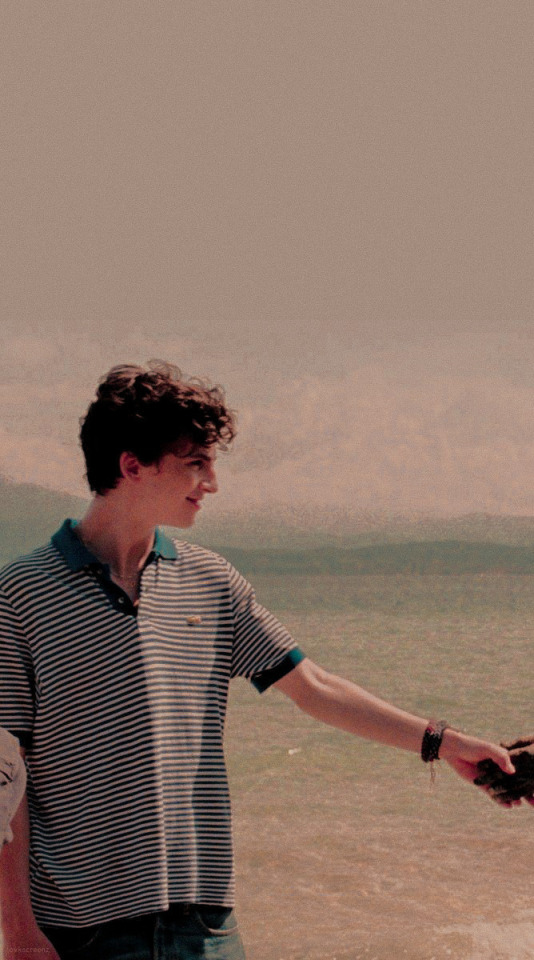
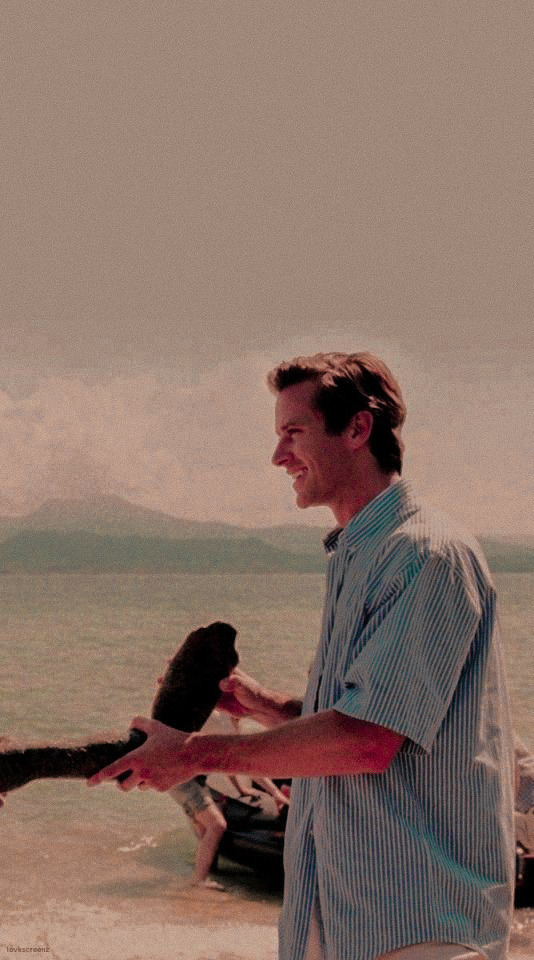
One of the most significant metaphor in this film is the greek statue. These sensual and ancient figures symbolize the nature of desire and physicality, and also represent the instinctive, irresistible love between Elio and Oliver. As an example, in the scene of cataloging the pictures of the statues, the words of Elio's father express these significance. Another scene also shows this metaphor very well. There is a scene in which the two have a little confrontation and after the subtle fight and jealousy, the camera shows the scene where they lift up the statue from the ocean. This scene can be interpreted as a metaphor that the desire became visible by bringing it above the surface as it began to be expressed as an emotion of jealousy. It means that the boundaries of emotions that were unclear until then have gradually became clearer. After the statue was brought up, the two call each other's names in a swimming scene. If there is a guideline in love, the first step will be recognizing each other's ‘existence’ (metaphysically speaking), and the last step will be taking a full look at each other's ‘existence’, the true self, a state of unity in which the other person becomes the other one, and vice versa, which is the idealistic idea of love. In that respect, it can be said that the two have already entered the stage of destined love. Following this, after making love for the first time, they call each other by their names.
In the next scene, the camera focuses on Elio sitting on a bench and reading a book, following the narration:
‘The Cosmic Fragments by Herclitus’
“The meaning of the river flowing is not that all things are changing so that we cannot encounter them twice but that some things stay the same only by changing.“
Human beings are existents that change from moment to moment, and human identity is what grows due to conflicting elements or events. One of the reasons ‘Call Me By Your Name’ is such a special movie is that it can be a movie about love but also can be a movie about growing up. In this scene, Oliver's voice specifically puts the contents of the book as a narration because probably he is the very ‘moment’, the very elicitor in Elio's life. Although it is not revealed through dialogue or narration in this film, Elio has a very important moment of choice. Before making his first love with Oliver, he continues to engage with Marzia. If we learn that some important moment will change ourselves forever, it will probably be confusing and we will try to stay in the stability that we’re standing on right now. So Elio looks forward to meet Oliver, but he also feels nervous that something might change in himself. Perhaps Oliver left the book in an attempt to share the voice of wisdom with Elio? Like a flowing river, humans will always change, and even in the moment of change, we will still be perfectly ‘ourselves’. Perhaps this is the most important narrative in growing into life.
In this film, there are many voices overlapping between scenes, which kind of reminds of the act of retracing memories through one’s mind. (When we sometimes try to remember various scenes from the past, some imagery or voices pop up first before continuing to the next scene.) Also when it is a scene that Elio's emotions are maximized, music is inserted, which can be seen as a hint that this was based on Elio's memories. And the scenes where the focus becomes blurry can also be the evidence of this assumption.
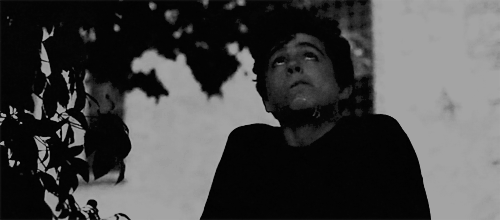
In an interview, director Luca said that the meaning of true love is to accept difference as itself. In other words, it can be said that true love is not distorting the other into an stereotyped image, but seeing the other’s true ‘self’ clearly. After the scene where Elio realizes his desire and makes a first kiss with Oliver, the camera captures the image of Elio, waiting for Oliver who is too cautious about love, who is trying so hard not to surrender. And the narration comes in the middle of this scene. 'Do I know you?' Elio asks himself if he ‘truly’ knows Oliver. Or Oliver truly knows him. Often in romance movies, looking into each other's eyes is considered a cliché. As it is said that the eye is the window to the soul, the act of looking at the eye is the final gesture of love, the gesture of wanting to understand other’s true soul (the existence, the idée-edea). This is realized when the two make love for the first time and change each other's names. What's interesting here is that it was Oliver, not Elio, who suggested this first. Even though the desire became visible, it was Elio who actively expressed it, and Oliver was the one who relatively rejected it and avoided it. Remind ourselves what Elio's father said at the very end of the movie. “Nature has cunning ways of finding our weakest spot”. Oliver, who is older and probably has some experience with love, is actually being realistic avoiding Elio. The fact that Oliver’s wound from riding a bike became more festered after the first kiss with Elio suggests that the nature has discovered such a weakness (love for Elio) from Oliver. It is also understandable that Oliver, who has completely surrendered for the fatalistic love after this, wants a full understanding of the other. He understands how love can make a person helpless and lead to despair. When people don’t try to see each other as the complete ‘true self’ or accept difference as itself, relationships between people becomes inevitably distorted and tragic. He has rejected the love for Elio because of this fear (including practical reasons), but nature brought him down to a state of exposure. Therefore, asking each other to call as each other's names can be seen that Oliver finally accepted what he refused because he was too afraid of being hurt or hurting the other, and praying only for the complete love from now on.

There are two related scenes that are very interesting to see in this regard. There is a scene where Oliver deliberately dances closely with another woman in front of Elio's eyes, and the next day the two confront each other. At that time, in the scene passing through the door, the person who passes through first, that is, the person who leads, is Oliver. And after the two have made love for the first time (when Oliver is completely surrendered by nature of love), in an awkward atmosphere, Elio passes through the door before Oliver. Through these two scenes, we can see that the power dianamic, or superiority in this relationship has been completely reversed.
At a square with a monument commemorating the Battle of Piave, the camera takes a brief shot ascending towards the sky. This is the scene where Elio confesses his love to Oliver without saying that he loves him. In previous work of Luca, he used movements of camera to symbolically express relationships and emotions between characters. From that point of view, perhaps it can be seen as a symbol that Elio's desire has risen to its peak, and at the same time, the change in the relationship between the two begins to drive forward. And although it may be a coincidence, the camera takes a shot from top to bottom in the scene where the two go on a trip together, before the scene where Oliver has to leave. And after a moment of the descending camera movement, there is a scene where Oliver remembers the memories of the two at Piave Square while watching Elio, who fell asleep after making love at the hotel. Then he abruptly turns to the side as the news of the sudden breakup attacks(the sound of the train). And immediately after that, the sound overlappes the scene of the train station. It is as if the journey of the two's love was brought up by fate and then settled down again.
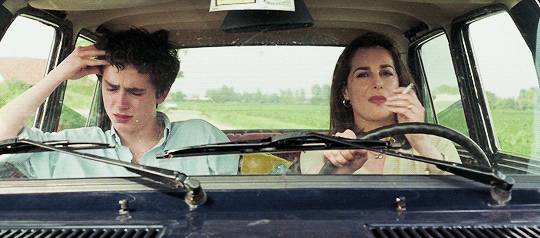
The timing of this film and the Battle of Piave are also closely related. Because the time where they are in is the summer of 1983, that is, the time of the AIDS wave. They are in a kind of virtual world that is closely connected with the reality around them, as if they were in the eyes of a typhoon. Like Elio, who confessed love while standing next to a statue that symbolizes the damages, death of the war(which can be interpreted as the AIDS situation where hundreds of people’s lives were at stake), the gap between the world in which the two are staying and the real world outside the shell is expressed very interestingly in this film.
Another interesting ‘connection’ in this movie is the scene where Elio watches Oliver dancing. There are only two scenes where Oliver dances based on the same song. Elio, enamored with jealousy in the first scene, drinks while watching Oliver, and in the second scene, this continues to Elio being drunk while watching Oliver, and after that he vomits. Personally, I think these two scenes symbolize the beginning and the end. It is the structure of continuation in the movie. Like a formal symbol where a love like drunkenness begins and ends.

It is no coincidence that Oliver is the only American in this film, and is set in the position of a student who stays only for the summer. This is because the symbol of the stranger who suddenly appeares in the landscape where everything else perfectly melts into the background means, that the essence of love is that the differences between two world eventually make contact with each other's eyes. Even the difference ‘itself’ is accepted without any distortion. That is the purpose and theme of this film. When I watch this movie, I sometimes think that what this movie is trying to say is completely different from the other typical queer movies. Other queer movies pay attention to the “queerness” of queer, but this movie rather pays attention to the “universality”. The universality of enjoying and appreciating love is shared from all kinds of people all over the world. Despite being a queer film set in the 80s, there are no obstacles between the two protagonists. It is a choice to only show the journey of love, that magical universality. I'm a pessimetic person, so naturally I’m kind of skeptical of this so-called ‘universality’ and ‘nature of love’ that a film like this presents. Can you really accept someone with its full self without any distortion? Isn't the first thing to be addressed is the anwser to the question of ‘what is the essence of human being?’. Human senses inevitably entail distortion, and the brain, where survival instinct and the reason are mixed, attempts to shrink and simplify the multi-layered and obscure nature of humans to a minimum. Isn't the existence of others inevitably bound to collide with another? As other reviews of mine will say, I'm skeptical, but I'm not hopeless. This is because I think that the state of struggling to try is perhaps the only goal that humans should have. Maybe Director Luca have different opinions from mine, but I see this movie as part of that attempt. This fantasy, fairy tale love story looks so perfect and ideal. The director's attempt to present it as some kind of a living experience is definitely admirable.
In the last scene, when the camera calmly captures Elio's face and the ending credit goes up, the lingering emotion we feel is quite unforgettable. That scene feels ike they are finally proclaiming that this magical experience was forever over. When Elio's mother calls out towards Elio, what Elio heard was the obituary of the one united person, someone, Elio and Oliver.
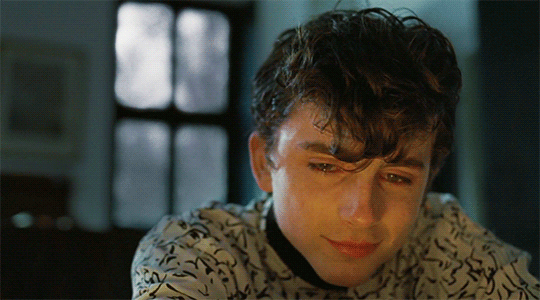
#call me by your name#cmbyn#luca guadagnino#timothee chalamet#armie hammer#film analysis#film#movies
56 notes
·
View notes
Text
Stuff I was thinking already that came to the front of my mind when reading this Matt Taibbi article:
(i.)
There really has been an upsurge in bizarre “cancellation”-like phenomena lately. Specifically, the rationales for cancellation have gotten weird, hyper-trivial, sometimes simply unintelligible (to me).
David Shor’s offense was retweeing a study by a prominent black political scientist who was trying to understand what parts of the civil rights movement were most effective. Lee Fang shared a clip of an interview he did with a black BLM supporter (not a public figure) who expressed a narrow critique of one aspect of the movement. In neither case is anyone trying to cancel the people who actually said things, only people who related to others that they said those things. Wild! Some seriously 2013-tumblr-level “receipts” here.
(People allude to some long history of Fang being racist, which maybe he was, but then talk about how. It’s like tumblr in 2013 in that people offer you concrete evidence at the level of “once reblogged a ship I hate,” paired with the allegation of some larger pattern of unspecified badness, as though any concrete evidence paired with any bigger allegation are enough to convince, no matter how unrelated or disproportionate the two.)
What confuses me most about this is its supposed connection with the George Floyd protests, which were/are very pointedly material. In the pejorative sense that right-wing culture warriors use the word “woke,” the protests aren’t actually “woke” in any meaningful sense. Police brutality is not a symbolic offense; “defund the police” is not a demand to replace one symbol with another. The protests have not focused on elevating or deposing specific individuals, modifying language norms, asking white people to more openly proclaim their anti-racist bona fides, or anything like that. They’ve taken aim at a specific, dysfunctional part of American city governance (the police). They have pursued those aims effectively, from what I can tell, without diffusing their focus, getting hijacked by personal agendas framed in related-sounding terms, or devolving into infighting.
The right-wing culture warriors would say leftists are never not “getting hijacked by personal agendas framed in related-sounding terms” and “devolving into infighting,” and TBH, on that one they have a point (echoed by no shortage of leftists since forever). To them, it is simply another prediction confirmed to see a BLM protest one day and a bout of nonsensical left-of-center infighting the next. But these aren’t actually the same people, or the same movement, are they? So what’s going on?
From “stop killing us!” to “cancel culture” there is a missing step that needs some explaining.
(ii.)
The Taibbi piece helped convince me that something strange is happening inside major news outlets right now.
The Scott Alexander / NYT thing feels more intelligible (although perhaps this is a coincidence) in the context of a concurrent industry-wide upheaval which, justified or not, certainly can be expected to throw usually well-oiled machines into disarray. Taibbi:
Beginning on Friday, June 5th, a series of controversies rocked the media. By my count, at least eight news organizations dealt with internal uprisings (it was likely more). Most involved groups of reporters and staffers demanding the firing or reprimand of colleagues who’d made politically “problematic” editorial or social media decisions.
The New York Times, the Intercept, Vox, the Philadelphia Inquirier, Variety, and others saw challenges to management.
At the Washington Post, there was that baffling choice to “cover” the “story” of a random person coming in blackface to the Washington Post’s own Halloween party two years ago, in an ill-advised reference to a then-current Fox News gaffe about blackface. One of the most prestigious papers in the US ran this story, and somehow no one could figure out how this even occurred:
In the hours after publication, the story started to receive widespread criticism from journalists on social media on the grounds that it got its subject fired while lacking news value. (Readers had to get 85 percent of the way through the story to even learn that Schafer had lost her job when she told her employer the story would be running.) The article now has drawn over 2,000 web comments, which are overwhelmingly negative in nature. Yet aside from PR statements to outlets covering the Post’s coverage, the Post’s response to the criticism of this story has been silence. If this is a story with “nuance and sensitivity” that the Post felt “impelled” to run, why is a spirited defense of the Post’s journalism coming only from a non-journalist spokesperson for the paper?
The answer we reached, after interviewing ten current Post journalists for this story, is that the paper’s staff generally does not consider the story to be defensible.“My reaction, like everybody, was, What the hell? Why is this a story?” a feature writer at the Post told New York. “My second reaction was, Why is this a 3,000-word feature?” The feature writer added, “This was not drawn up by the ‘Style’ section.”
Employees at “Style” — the paper’s premiere location for long-form storytelling — were confused and displeased to see the piece running on their turf, two Post employees with knowledge of the situation said. Neither Fisher nor Trent works for the “Style” desk, though as newspapers have gotten increasingly focused on digital distribution, the walls between newspaper sections have become more porous.
When things like this are happening, when one hand doesn’t know what the other is doing, when upper management is rotating out above you . . . things like the Scott Alexander episode don’t really feel surprising.
Journalism is always on a special kind of thin ice, because it has no function other than being a trustworthy source. We understand that businessmen will lie to you to make a buck, and we may decry this, but we understand it’s not a paradox: that there is (or at least could be) some value in business itself, that must be traded off against truth-telling.
But a journalist is just a better version of your gossipy-but-trustworthy friend who hears a lot of things on the street. That’s their purpose. If they lose your trust, there’s nothing more there. If they behave mysteriously, and do not explain themselves, and lean only on their august reputation (built by others, not the present speaker) for support . . . there’s nothing more left, to elevate them above your friend. (Your friend wouldn’t do that! Your friend would tell you what the hell is up, that’s making them all weird!)
Discussions about the prudence of “making war on the media” need to take this into account, I think. People’s trust in the media has a certain lack of inertia. Its role is clearly scoped, failure to serve that role is easy to document and publicize, and there is not enough built-up stock of trust, at the institution level (I’m sure you’ve seen the relevant public opinion polls), to prevent people from asking the question: “if you can’t do that, then what the hell do I need you for?”
(iii.)
Among the things that irked me about that Scott Alexander article in the New Yorker, there was this:
Additionally, it seems difficult to fathom that a professional journalist of Metz’s experience and standing would assure a subject, especially at the beginning of a process, that he planned to write a “mostly positive” story; although there often seems to be some confusion about this matter in Silicon Valley, journalism and public relations are distinct enterprises.
What does this mean? It appears to be bald distrust of what Alexander relates about his own experience, on the basis that an experienced journalist like me wouldn’t do that. It presents itself as something somewhere between opinion and fact. Alexander is a character, the tone says, and I am an author. He says his piece, and then I tell you the “real” story, with my imprimatur.
I felt the same allergy reading another, unrelated New Yorker article the same day. Discussing Ibram X. Kendi’s How to Be an Antiracist:
As a boy in Queens, Kendi found his life shaped by a fear of victimization. “I avoided making eye contact, as if my classmates were wolves,” he writes. “I avoided stepping on new sneakers like they were land mines.” In South Jamaica, his neighborhood, there was a local bully named Smurf, who pulled a gun on Kendi, and once, with Kendi watching, beat a boy unconscious on a city bus in order to steal his Walkman. This sounds terrifying, but Kendi now claims that his fears were delusional. [ . . . ] By the end of the section, the bully named Smurf seems less like a real person and more like a spectre: the personification of old racist ideas, come to life in the imagination of a fretful future scholar in Queens.
As it happens, there actually is a notorious tough guy named Smurf who grew up in Kendi’s neighborhood around the same time. He came to be known as Bang ’Em Smurf, a sometime rapper [ . . . ]
Is Kendi worthy of some basic modicum of trust and charity, or isn’t he? He says he was bullied by a guy named Smurf. The writer expresses ambiguously couched doubt (“seems less like a real person...”), but what he takes away, he then gives back -- with his special imprimatur. “As it happens, there actually is” a Smurf. You cannot know this from Kendi, a mere unreliable narrator, a subject of my narrative. But you can know it by my word, for I am a priest of truth.
It might be a tasteless comparison, but there is some basic affinity between the way I feel reading these things -- right now -- and the way I feel watching the police mace civilians for no discernible reason, and then watching some functionary relate a sanctimonious yet incomprehensible “explanation” at a press conference later, saying the police department has done excellent work, we’re very proud of them. Among the best in the country.
You are so used to my trust. Your rhetoric, your reputation, live on that trust. I feel so oddly powerful, when I think about what it would mean to just provisionally retract it, and ask yourself to prove your worth, for once.
If you can’t do this, what are you for?
273 notes
·
View notes
Text
what the world will look like when it’s over
Can’t Get You Out of My Head is the first Adam Curtis documentary I’ve seen. I gather it’s not the most successful demonstration of his method; it sounds like Hypernormalization or The Century of the Self are tighter in their construction, less effortful (count how many times Curtis says something like “But then it started to run out of control” in this one), and perhaps less frustrating in their narration. In the early episodes of this documentary in particular, it feels like Curtis is constantly presenting what’s being covered as the turn, the decisive shift in his narrative—the emergence of the American counterculture, the revolution of the “unit of One” led by Mao Zedong’s wife Jiang Qing to help her break the stalemate with the other revolutionaries in China into which Zedong had fallen in the 1960s, George Boole’s development of Boolean logic to describe human thought. And the whole thing feels longer and baggier than it needs to be. The early episodes devote much time to interesting individual narratives, like that of the Trinidadian British activist or sorts named Michael Freitas (or Michael X) or a trans woman named Julie in 1960s Britain; they also sprawl in a way that makes the overall argument a bit hard to divine. It’s not until the fourth episode that the shape of Curtis’s narrative becomes clear—that our age is the product of a struggle between a new, broadly liberal-democratic and capitalist image of individualism, a dying era of collectivist struggle, and older, more vicious systems of power, derived from the control of capital and expressed through the middle classes’ suspicion and viciousness toward the subaltern and toward each other, even as they remain subject to the power of oligarchs and billionaires.
Curtis also seems to play fast and loose with the facts sometimes. When he presents Médecins Sans Frontières’s founder Bernard Kouchner as an avatar of a theory of the “one world” of liberal democracy—the idea that we’re basically one world of individuals, enjoying certain human rights regardless of political orientations or ideologies, and that Western nations are duty-bound by virtue of their prosperity to intervene when other nations violate people’s rights—it seems a distortion of what Kouchner actually says in the footage Curtis includes: “We don’t care on leftist or rightist countries [sic]; there is no leftist and rightist suffering, and there is no possibility to split the world in[to] ‘good’ people or ‘bad’ people, ‘good’ dead and ‘bad’ dead.” Which isn’t to say Kouchner didn’t believe in liberal-democratic ideas—he may well have—but what he’s shown as saying has to do with the consideration of suffering as suffering regardless of a person’s identity or allegiance, which is a different matter.
This is just one of several moments when I stopped to wonder how secure I actually was in Curtis’s hands. But ultimately, I find the emotional history he lays out resonant. The age we’re living through now, in the 2020s, is indeed the product of certain fantasies of individualism and of a post-end-of-history, neoliberal “one world”—with no ideologies but capitalism and putative democracy—meeting age-old systems of power, acquisition, and control, and age-old features of the human mind and heart: resentment, prejudice, betrayal, jealousy, the need to be prosperous, the need to be free.
And Curtis’s work appeals to me for the same reason the writer Pankaj Mishra’s work does. He historicizes our underhistoricized time. What’s more, he does so in a way that’s especially rare to see in any mainstream media venue. Usually, when you want to understand the connections between, say, colonial-era empires and post-war welfare states, or if you want to understand what happened to turn Western societies as they were post-war to Western societies as they are post-financialization, you have to seek the information out on your own. It’s valuable to have someone in a place like the BBC willing to put the pieces of these narratives together. And willing to remind us of the events that are so incredibly easy to forget even in one’s own lifetime. Abu Ghraib, for instance, which pops up in part 6 of the documentary. That shit happened while I was alive. How often do I remember it? How many American sins get drowned out in the new ones that emerge every day of every month of every year? Or in the stasis that sets in when what was once novel, like the War on Terror or the invasion into our privacy represented by the Patriot Act, fades into regular life?
I was jotting down copious notes while watching the doc, as is my wont. The questions and thoughts that came up, in no particular order:
How do the elites of a given era impose their preferred ideologies? How are the structures of power we grow up with constructed, and how do those go on to shape our behavior?
Control, as it’s practiced by societies in the 21st century, often comes down to the recognition of patterns in human behavior—and their manipulation.
The loss of power, like that which was suffered after the collapse of Britain’s empire or in the slow hollowing-out of America’s manufacturing industry in the 20th century, leads to anger and melancholy that people can’t be expected to abandon. Does doing what you’re supposed to do bring you the happiness you were promised—or anything even resembling that happiness? When we’re living in a historical moment in which the answer is no, as is often the case today, we’ll need to watch out. It’s a sign people are being manipulated and abused.
Over time, the tech industry has come to understand that you can manage people en masse by collecting their data and manipulating the messages they receive in social media activity feeds and advertising—and you can make them feel like sovereign individuals at the same time through the very same means. In light of all this, will there ever be a revolution that actually changes the structure of power we’re currently stuck in? Is there a chance to alter this extreme individualism. on the part of people who are surrounded by political systems so enervated, by the supra-governmental system that is global finance capital—which politicians can’t control, and must appease and palliate—that they can’t respond to phenomena like climate change or meaningfully punish atrocities like wars prosecuted on false pretenses? Or are we stuck where we are, in a world that’s corrupt and exhausted? In nations whose governments depend on technologies of surveillance and myths of consumerist abundance or nationalist glory to maintain power, in the absence of any real vision for the future?
It all leads to some interesting takeaways. For one, the way culture reacts to politics and vice versa. As I was watching Can’t Get You Out of My Head, I was reminded of a conversation folks on the Discord server for the Relentless Picnic podcast had had recently about the strange things Richard Dawkins posts on his Twitter account. And it led me to think: when religious “caring conservatism” was in the White House, Richard Dawkins and his New Atheism, this brash repudiation of religion and its pieties, grew as a counterweight. When Obama and his technocratic regime were in power, with social media bringing on a wave of progressivism in popular culture and algorithms presenting us a fantasy of endless choice—much of which was a thin veneer over the same old shit: banks getting bailed out, forever wars going on, productivity rising while wages stagnated—we also got Jordan Peterson-types who claimed to speak to a human need for narrative, even in this point of stability we had seemed to reach, this recovery of sanity after the chaos that was the Iraq War and the financial crisis; who claimed we needed ideas and myths to animate and drive our lives, because they sensed there was something hollow and mendacious driving all this consumer choice, for all it seemed a symbol of our freedom and progress.
Of course, both Peterson and Dawkins are provocateurs, not intellectuals; I don’t mean to dignify the movements they led much, since in both the appearance of intellectual rigor or moral clarity often covered the indulgence of the worst instincts: immaturity, obstinacy, provocation for provocation’s sake, contempt for women and trans people. The New Atheists had a point, and could be absolute assholes about it; they ultimately could be as fundamentalist and dogmatic as any religious people. As for Jordan Peterson, his actual work, in the way of so many grand theorists, uses the appearance of profundity to cover something ultimately pretty banal. And he’s most known for grandstanding in the public sphere—refusing to use people’s pronouns, the usual conservative shit. But these movements do seem to reflect a countercultural response no less than 1960s counterculture reflects a reaction to the staid culture of 1950s America and the sins it covered up.
Which leads me to the question: what was the culture’s response to Trump’s administration? Maybe QAnon and Russiagate, as conspiracies—that is, actual narratives people inhabit to explain the world’s evils, and not just a vague need for them that they satisfied with Jordan Peterson’s light form of Stoicism or his theories of Light and Dark or whatever the fuck. And in that way, perhaps, once a countercultural movement—namely nationalism and Trumpian populism—actually seemed to have overthrown a regime, of Obama-era liberal technocratic management, culture and politics came to mirror each other, rather than standing in opposition to each other. Both became equally conspiratorial and unhinged; in fact, they merged. All the ruling myths and conspiracies mutate in kind these days: Trump’s garbage about draining the swamp, a cover for Trump and his family enriching themselves and Stephen Miller’s like getting to fashion the state they wanted, becomes QAnon’s garbage about rings of child trafficking and pedophilia and Trump, of all people, being their savior—all while actual trafficking and abuse perpetuated by Jeffrey Epstein and his ilk goes unpunished, Epstein’s death swallowed up by the state without a sound—becomes the liberal pundit class’s screaming about Russia: connections between Trump and Putin that were always conjectural to me, because no one who pled them seemed to feel much need to substantiate them.
Here again I feel like what were once centrifugal forces in our culture—between mainstream and the independent media, for example; between people in power and their critics, either in the media or at society’s margins—have collapsed into a single morass. We’re all in hell and there’s no way out.
In all this, what does Biden’s administration represent? Little more than an interregnum, to my mind. How disappointing to see not even a gesture toward forgiving student debt or raising the minimum wage in these first 100 days of his presidency. There’s been some progress in climate legislation, and progress in putting Stephen Miller’s deportation machine to a halt (though they’re also reopening several emergency shelters to accommodate more minors already being held past the mandated limits for keeping them in the custody of the Department of Health and Human Services’s Office of Refugee Resettlement). But there’s also been such triangulation on policy by the administration and its supporters and such complacency on the part of the media covering the administration, refusing to call them out on or even cover this. And how can the average voter respond but with resignation?
Ever since I read Thomas Mann’s Doctor Faustus near the start of lockdown, absorbing the picture of the world pre-World War II that’s presented in that book, I’ve thought we’re in the same sort of moment that Mann’s protagonist Zeitblom was in. There’s a crisis that’s passing over this whole planet like a wave or a seismic event, and no human intervention can interrupt it. We can only wait for it to pass—holding on to whatever’s to hand, waiting to see what the world will look like when it’s over.
#adam curtis#documentaries#thomas mann#jordan peterson#richard dawkins#pankaj mishra#the relentless picnic#conspiracy
28 notes
·
View notes
Text
In Valentines Day spirit... a lil love... and a lil angst.
Fools And Love.
Since long before Ashara’s flower blossomed, she knew that love made fools of men. There were many that came and went, fell over themselves and professed love for her pretty eyes and tinkling laugh. Even a Dornish prince had played the fool for her and sworn off marriage, and instead pursued fleeting desires.
Elia broke her promises and chose Rhaegar. When she uttered the rejection, Ashara literally heard her ribcage crack from the explosion beneath her chest. She had finally conjured up the confidence to confess long-hidden feelings and Elia gave a response she never foresaw. Her sweet Elia, the one she trusted above all others, and the one that loved her like none. The irony was not lost in that, at the beginning, she had wanted to apologize in advance because she thought it would be her to accidently break Elia’s heart and run, just like she always had. Yet, in the end, it was Elia who ripped her heart out and abandoned her.
It was only in Elia’s abandonment that Ashara realised she never healed what was broken inside of her. Elia was the tourniquet to her being, and without her, she was left bleeding on the cold, hard ground.
First, came an agonising emptiness which left her powerless to rise from her bed. Then, a volatile rage she unleashed on anything in her proximity. Next, she chased an oblivion in endless goblets of wine. Lastly, came the venomous desperation, which had her acting out for Elia’s attention in the most foolish ways.
After a long confinement, when Elia had not come chasing as usual, Ashara returned to court like a hurricane, on the centre stage of the Realm’s biggest and most extravagant tourney.
Lord Whent’s tourney at Harrenhal attracted nobility from every hill, river and rock in Westeros. From the sour lords of winter to the prickly roses of the Reach; to the stags of Storm’s End, to the old keeper of the Mountains of the Moon. Even Mad King Aerys, looking haggard and unhinged, crawled out of the dragon’s den for the first time in years, much to Rhaegar’s dismay. However, noticeably, the lions of the Rock were nowhere to be seen, except the newly knighted golden cub, Ser Jaime.
The tourney was as much a political event as it was an athletic melee. Treason was in the air, and the Great Houses of Westeros had more in mind than jousting, archery, and merrymaking. Ashara knew of the great efforts Rhaegar and Elia underwent to secretly fund the tourney in guise of calling a Great Council and initiating Rhaegar’s ascension to the Iron Throne.
After the opening ceremonies, when the dancing walls were hung with magnificent tapestries, each emblazoned with the symbols of the Great Houses, the psychological games began. Aerys made his own power plays and officially named Ser Jaime the youngest knight in kingsguard history. A clear spite at his Hand, thereby claiming the heir to the Rock his own.
Nonetheless, Ashara had plots of her own in mind. Driven by foolish attempts of attention seeking and many a cup of heady Dornish Reds, Ashara dragged Prince Oberyn up after a long evening of introductions and tedious niceties.
“Now, come. Let us show these stiff Northerners how to dance properly, my prince!”
Always ready for mischief, Oberyn set aside his wine before Ashara swept him to the centre of the dance floor.
Ashara expected the many eyes which stalked them, the distrust for the Dornish and their strange ways was something she was long accustomed to. Yet, there was only one pair of dark orbs Ashara cared to attract.
She took one of Oberyn’s serpents and waved to the musicians, who picked up their instruments and began to liven up.
The technicoloured red and blue serpent slithered up her arm and down her exposed mid riff.
Ashara was a foolish maid in love, recklessly seeking the love she was deathly afraid of losing. When she gazed up at the princely couple, seemingly besotted with one another, she knew she would sooner withstand Elia’s blazing rage than her careful distance.
She brought the serpent’s head close to her face and stuck out her tongue as its forked one did the same. The music swelled and she began to mirror its movements seductively as Oberyn stalked around her gyrating form. She moved with a slow and sensuous purpose as the snake coiled around her and slithered into Oberyn’s grip. Her body wove itself lithely in tandem with the growing rhythm of the seductive beats.
To dance was her freedom, to dance was to become a shooting star, and in the crumbling ruins of Harrenhal, Ashara came alive for the first time in so long.
Her movements flowed with a dazzling grace that took away the breath of every person in her audience. She felt her soul become one with the music and she unleashed her emotions into the dance; heartbreak, jealousy, longing. In that moment, she needed to dance as badly as she needed to breath. She wanted to shine and be seen in the darkness.
When she noticed that Elia’s attention remained on her husband, despite the audience she drew, Ashara grew more desperate. She was determined to draw such spectacle that Elia had to do something. Anything. It was not a well thought out strategy, merely a frantic attempt to salvage what had been shattered between them.
When the song ended and the applause came, Ser Barristan the Bold, stepped out another fool in love.
“Lady Ashara, I must insist on the honour of dancing with you. I am no great dancer, but I am certain your talents will more than make up for my lack of skill.”
She nearly declined until she caught Elia curiously watching her. She took it as a small victory and laughed loudly, throwing her head back.
“Ser Barristan, the honour is all mine.”
She took his offered hand, and it was the first of many. She danced with an entire host of men; princes, knights, and lords alike. Ashara was in her element, gliding close to whichever man she held close in her long arms and dared hope to see vexation in Elia’s expression.
She chased Elia and they chased her.
The men would take and so would she, for it was clear love was not meant for Ashara. These men would flirt and dance, perhaps even take her to bed, or to wed, but she knew none of them meant to see her beyond the violet eyes and fair golden skin. The only eyes which had ever seen her were so dark she could scarcely breath sometimes, and now they were blinded by fire.
Despite the sparing glances, Elia made no movement towards her, and Ashara descended further.
She left behind willing partners looking forlorn as she bounced to her next conquests. She flirted outrageously and was vitalised by the scandalised looks.
She was entirely content to continue her path of self-destruction until she saw dark grey eyes watching her. She noticed them follow her as she danced with Barristan, Prince Lewyn, Ethan Glover and Jon Connington. Always watching yet without hungry lust as some, or barely disguised disgust as the others.
She knew he was a Northman from the rigid way he sat between the boisterous young storm lord Robert Baratheon and his patron, old Jon Arryn, the Lord of the Vale.
Her curiosity fell away when from the corner of her eye, she saw Elia gaze over at her before whispering something to Arthur, and when he walked over to her, she felt victorious in her rebellion.
Yet, those hopes were quickly dampened.
“Did she send you here?” She asked.
Arthur sighed and looked at her apologetically.
“No.”
Elia did not want her. Ashara feared that this new meek woman that was Rhaegar’s wife would never love her like Elia of Dorne had.
Were things the way they once were, Elia would have risen from her seat and joined in the merriment long ago, propriety be damned. Ashara yearned for Dornish nights and Rhoynar rhythms, of small soft hands and blood orange scented kisses.
Ashara was taken out of her reverie and reminded of exactly where she was. On the dancefloor of a crumbling castle with near enough every pair of eyes on her except the ones she wished for.
Arthur gently caught her hand.
“Sister, dance with me,” he prompted.
She knew Arthur’s intentions were to soothe her suffering as he always had. For the pleading in his expression, she accepted the request and rocked with him to the slowing tune.
“I know it doesn’t seem like it now, but you will learn to breathe again without her,” he explained interrupting the stillness between them.
“I don’t want anything without her.” She answered petulantly, cursing herself for sounding like a spoilt child.
She felt more childish when he leaned back slightly and peeped down at her seriously.
“Ashara, you have to learn to live for yourself, not for anyone else, not even for her. For so long you held love with an iron grip but at arm’s length. You could have had your sweet Elia long ago. Inevitably, it would still have ended the same way because duty was always going to call for the prized sun of Dorne…”
His words stirred something uncomfortable inside her. They were difficult truths to accept. She made many excuses for why she waited so long to reveal the depth of her feelings. It always came down to her own inadequacy and inability to feel deserving of love.
“…You deserve love, Asha. Just because it no longer resides where you believed it to, does not mean it is not out there for you,” he finished.
Deep down she still felt like the neglected child that begged for scraps of her mother’s attention – like the abused girl that was sullied long ago.
It was an arduous and complicated set of issues to settle, but for the first time, Ashara was confronted with the truth.
“I don’t know who I am without her,” she admitted.
“Then perhaps you ought to find out.”
She took a moment and considered Arthur’s suggestion.
She wondered if it truly was time to attempt to move on. It left her chest feeling tight because it was something she never even fathomed to consider before. It was in the unknown to exist anywhere that was not Elia’s side.
Before she could respond, she was swiftly whisked into the arms of another, the charming Brandon Stark. He had made himself as well known as the young storm lord that evening, and it would be a lie to say her eye had not wondered to him during the introductions.
“Lady Ashara,” he greeted with a mischievous smirk and mirth gleaming in his eyes.
She feigned disapproval but continued gliding along with him despite it.
“The Sword of the Morning will not take too kindly to that, lord Brandon. I fear you may have made yourself a formidable enemy in the lists tomorrow.”
Brandon was not typical of the stony-faced Northmen. He was bold and confident, which she found attractive, although she would never admit that aloud; there was a cockiness to him that raised her defences.
“It’s just harmless fun, why should he make an enemy out of me?” He countered.
He acknowledged Arthur and nodded in respect, although the twinkle in his eye remained.
“You have a sister do you not – how pleased would you be if a man took off with her?”
The smugness fell from his expression momentarily.
“I suppose for her honour, he would become my enemy,” he answered gazing towards a young dark-haired girl Ashara assumed to be his sister.
She was a pretty thing, with the same teasing glint in her eyes as Brandon.
“Then what makes you exempt from my brother’s wrath?”
His knowing smirk returned as he peered at her with his grey eyes, and she hated how it made her blush.
“For a start, you think me quite handsome, and you enjoy me.” He winked with a growing grin.
Ashara laughed despite herself.
“And that’s enough to warrant his forgiveness?” She countered.
He shrugged playfully before brushing her hair back from her shoulder, with just the right look of heat in his eyes and moving in so close she could feel his lean body pressed up against her.
“Then perhaps I ought to give him better reason to make me his enemy.”
She pretended to be indifferent to Brandon’s seduction. It would not do to allow someone with an ego like his know how much power he had. Thus, she refused to lean in or seem too keen.
“You’re very sure of yourself.”
“As are you, Ashara.” He looked pointedly at the men that stood peeved in the wake of her abandonment.
“If you came over to insult me Brandon, you can surely return.” She scolded as she recoiled.
Ashara was not a stranger to rumours, men and women alike often set their tongues wagging over tall tales about her. Unlike Dorne, the rest of Westeros were prude little creatures when it came to pleasures, but she would be damned if the would-be Warden of the North, who had his own whispers of lovers and bastards, would question her integrity.
“My lady please forgive my impertinence. In fact, I truly came here to request a dance of you, with a man far more honourable than me.”
Confusion washed through her, but strangely, she was intrigued. Man after man had taken what they wanted from her this night, and it was odd that one remained reserved.
“That won’t take much… but go on, who is this poor fellow?”
A wide grin spread across his features.
“My young brother is too shy to approach you. Don’t be so hard him. Whilst I was blessed with all the charm in the family, he is good and honourable, a man worthy of your time.” He spoke with pride.
As audacious as Brandon had been, it was evident now that it was act to make his brother appear the better man.
“Very well, but I shall decide that for myself.”
Brandon returned to his table and Ashara was surprised to find that his shy brother was the stiff Northman that had been watching her all night.
Ashara could not help but chuckle endearingly when she saw the younger Stark’s back stiffen and panic wash across his features as Brandon whispered to him.
The young Stark was not as tall as his brother, just of a height with her; he kept his long hair tied back messily, and unlike Brandon, wore simple clothing unadorned with any marks of House Stark.
It would be difficult to guess they were brothers if their features were not so similar, and even then, where Brandon was always smiling, the young Stark already had frown lines across his brow.
“My lady, I thank you for the honour of a dance,” he greeted, inclining his head rigidly, and offering his hand.
She took his hand and led him to the dancefloor.
It was awkward at first, because even at their slow pace, it was clear Stark did not have the grace of a dancer. She rearranged his hands until they were in the correct position, and led the steps, anything to occupy herself from meeting his mystifyingly intense gaze.
“Do you happen to have a name?” She wondered, once they swayed in rhythm to the languid tune.
“I do.” He answered, adding nothing further even as Ashara tilted her head in curiosity.
“You’re not very talkative, are you?”
“If you might give me your name, I shall give you mine.” He said unsmiling.
When she finally met his expectant stare, she saw the beginnings of a smile pulling at his cheeks, and something akin to intrigue flared inside her.
In that moment, instead of seeking Elia, she found herself regarding Stark, questioning if he was not shy at all, but instead, reservedly confident.
“It appears you already know who I am.” She answered with a cock of her brow.
“I would rather get the name from the lady herself than the fame which precedes her.”
Ashara found herself pleasantly surprised by their exchange.
“I am Lady Ashara Dayne, lord Stark.”
“Thankfully, I shall never be lord Stark… I am Eddard Stark, although you may call Ned.”
A teeth-baring grin spread, and his face transformed. She found herself strangely attracted to the quiet wolf.
“Ned.” She said testing out the syllables on her tongue.
The song picked up pace, as did she.
Her feet struck the floor in perfect synchronisation with the building tempo and his pursued with every step. Ned’s grey eyes shone behind the shy expression as they advanced, retreated and pirouetted.
The rapidly enclosing space between them felt electric and burning. There was something she could not explain about this quiet Northman, who stared into her eyes as if he could see past all that she armoured herself with and saw the frightened girl inside. She felt admired, as one might the stars on a clear night.
“Why do you keep staring at me?” She finally asked, fascinated in his unravelling scrutiny of her.
His answer made the flirtatious grin fall from her face.
“You have danced and laughed quite a lot tonight… But I can’t help by notice, you don’t seem all that happy, my lady.”
Shaken, she abruptly halted her movements.
She remembered the pain in her chest and found Elia across the room, glaring at her with fire behind her eyes. She was confused because this was what she initially wanted, but now she had it, it felt nothing like victory. For with Ned, for just a moment, she put aside her heartache… and breathed.
“You’re very perceptive.” She answered, a slow panic filling her.
“I’ve said the wrong thing.” He commented apologetically, noticing the change in her.
She looked up at him wide-eyed, contemplating the stirring emotions inside her.
For reasons unclear to herself, she lurched to kiss him, but he pulled away just as quickly.
Embarrassment filled her and she exploded into blazing anger.
“Is this not what you wanted, Ned – to say you had an easy Dornish wench to your brother and friends?” She spat turning to walk away.
He chased her before she could escape, appearing ahead desperately.
“I meant no disrespect, lady Ashara. I would never dishonour you in such a way, only when I kiss you, I want it to be because you want it, not because you think that’s what I want.” He interrupted.
That he could read her so easily, and was not scared away by it, terrified her. Just like she always did, she crumbled under her fears and lashed out.
“What honour is there in getting your brother to do your courting? I pity you Ned, that’s why I danced with you.”
He flushed in embarrassment, and deep down, Ashara was ashamed for it.
“Then allow me to rectify my actions, may I do something no other has done today?”
Despite her urgent need to flee, she was intrigued.
“Go on.”
“Will you come sit with me, Ashara?”
“What?”
Again, she was surprised by this strange Northman.
“I want to get to know you, is that so hard to believe?”
She carefully maintained a neutral expression. Yet, even in that, he read her disbelief.
“Come on, Ashara, get to know me, take a chance on a fool in love.” He pleaded.
Love.
The word spun around in her head, and she realised, for the first time, it was something she truly yearned for.
Warmth began to spread through her blood and hammering seized her chest.
“I-I…”
Despite her epiphany, her tongue fumbled in her mouth. She did not know how to articulate such desires and succumbed to old behaviours.
“…I can’t. I’m sorry.”
Without a single glance back she fled, a maid made a fool by love.
#asoiaf fic#fanfic#ashara dayne#elia martell#dorne#house martell#elia x ashara#arthur dayne#game of thrones#ned stark#ned x ashara#house dayne#got fic#brandon stark#Brandon x ashara
27 notes
·
View notes
Note
As a pearl lost in ocean depths, pallid skin glistens in cold light. Down here, in the capital's bowels, it's only them and that peculiar blue flamed wick, emitting the reek of burnt oil that creates a pungent blend; an assault to the nose. Perhaps the assassin has made a home of this inhospitable underground; but the General's presence is a stark juxtaposition. His leather boots sprinkled with sewage, finely tailored coat ruffled to keep from sweeping molded stone - he is out of place here, and it shows.
Yet somehow, the way he wields that lantern so close to the walls and feels for sigils under pale fingertips confesses a familiarity. Eventually, he'd pause - all too aware of that other presence beside his own. There were no invitations, of course; for none need be. Talon would hear his labored gait through murky puddles, and be alerted to the flutter of wings echoing through the cavern; the cries of the congregation, of birds never meant to reach the depths of the earth. Yet they existed here, in the darkness, as shadows given form.
Eventually, he pauses in his mysterious impromptu quest - his glare casts a dim ember glow on the mud as he turns to where they stand, peering through their veil of disguise. He stares directly at that spot, even if the naked eye ( the mundane eye ) would be met with naught but darkness. And there, thin lips draw into a subtle smile. I knew you would come, his expression reads. I knew you would take the bait.
" There are things in this world... " He begins, dragging his murmur through clenched teeth, as if his very essence is still gripping onto the horrible secret he is about to confess. " ... Things that evade the naked eye. You have been looking for doors. " He turns, to rest his palm on cool stone - on symbols carved long before either of them had drawn that primordial breath.
" But you have been looking with your eyes. " The lantern whines in protest when its glass front swings open slowly; though nothing touched it. Nothing visible at least. " Truth is rarely so simple, Talon... Du Couteau. " His expression darkened over the light, sparing them one more glimpse before he would blow the light out, leaving them in pitch black darkness.
" Do you want to know the truth, then, child? " His voice resonated from somewhere further, as if he'd moved on without them - though no steps would be heard. Only the flutter of wings. " For that, you must use your soul. "
Nothing was down here without a reason. Not at this depth. More dust and mold than anything else covered these ancient floors. Not even the world above tried to force itself into these twisting halls, barely a trickle ever finding its way here even in the harshest of times. There was no wind here, most would notice at first. But most would not stand still long enough in the darkness to realise how loud it was even without their footfalls. When something new and out of place appears down here, it does not go unnoticed.
Bats made their home down here sometimes, away from the sun. But the unkindness that scrabbled down here now were not bats. It sent chills up the assassin's back, to hear their wings disturb the dust around them, yet see nothing to give away where the flock was. However it did not stall their march forward, only adding to the mysteries and questions they had of the man who they suspected many things of and knew very little. The Grand General was asking to be followed, his cold light a beacon to follow. Talon no longer let themselves have expectations, denial that had sprouted into hope long ago had shrivelled bitterly. But Swain had not lead them astray ever since he had noticed them. And that itself perplexed the assassin more than the expected disregard.
Shallow splashes faltered as his dark silhouette did. And those eyes saw them. Although they knew darkness cloaked them, Talon was seen. And that realisation crawled under their skin more than it ever had above. Their focus snaps to every little movement he made, landing on where his pale skin met old runes. As if it had not occurred to them yet, Talon realises Swain has been here before. To find his way here purposefully. To know why they were down in this subterranean labyrinth. But they frown at their lack of foresight. How else was one supposed to see? They knew how to touch and feel details and specifics, to use heightened senses when one was not available. The spiral of thought nearly lets them miss the lantern opening for its owner; did he mean the arcane?
Their last expression before the light was snuffed was shocked from the name that slipped from his tongue. As sight was taken away, a gloved hand instinctually found the wall beside them. The blanket of age gave way as their fingers brushed its surface, moving forward to where their Grand General was last seen. Finding the symbols etched into the ancient stone. That unkindness was back, if it had ever disappeared. Hesitant for barely a breath, the assassin soon follows his disembodied voice at a steady pace. One had on the wall, the other baring a weapon - more for comfort than a threat.
"The truth could be simple if it were not always spoken in riddles." Their grumble was barely a whisper beneath their fabric mask, letting the echo carry it both ways into the darkness. Even as they let their eyes adjust to the dark, they knew it would do little but make illusions for movement in this still place. To give substance to those phantom birds. And after an attempt to muse his words, Talon surrenders their lack of knowledge.
"What do you mean, my soul?"
#‡ ic#‡ ask#vixtionary#long post /#this is NOT the fun excursion they were cryptically promised#quickly came back to put under a read more#so sorry mobile users
2 notes
·
View notes
Text
CONTROL YOUR ANGER
Ms. Aanam Verma | Head of Department | Asst. Professor Biological Sciences | CPSM College of Education | Gurugram
HOW TO CONTROL YOUR ANGER | ANGER MANAGEMENT STRATEGIES | TIPS TO OVERCOME ANGER

Most people get upset simply because they don't know what to do when they experience anger in their daily life. Sometimes aggressive behaviour may get their needs met in the short-term, but there are long term consequences. Your words might cause lasting damage to the relationship or even lead to its demise. So here by, I will like to share some simple tips how to tackle the ghost of ANGER.
When calm, express the anger

As soon as your thoughts are clear, express your frustration in an assertive but non-confrontational way. You must state your concern and needs in a direct and clear way, without hurting others or trying to control them.
Physical Activities

Physical activity like yoga, stretching, aerobic exercises reduces stress which is the cause root of your anger. Neck rolls and Shoulder rolls are good examples of nonstrenuous yoga like movements, which controls your body and harness your emotions. If you feel your anger escalating, go for a brisk walk or run, or do some enjoyable physical activities like cycling, hit a few golf ball, playing your favourite game.
Relaxation Exercises

There are many relaxation exercises but the key is to find the one that works best for you. Breathing exercises and Progressive muscle relaxation are two common strategies for reducing tension. Your breathing becomes shallower and speeds up as you grow angry. Reverse that trend by taking slow, deep breath from your nose and exhaling out of your mouth for several moments. In Progressive muscle relaxation, try to tense and relax slowly your different muscle groups in your body, one at a time, along with slow deliberate breathe. Eg. Closing tightly & relaxing your fist along with breathe in & out respectively. You can use kids small smiley ball too. Stress balls are also available in the market. Relaxation exercises take practice. At first, you might feel as they are not effective, but with practice, they will.
Warning signs

Be alert & aware of the emerging signs of anger like fast heart beat, red & hot face, clenching of fist, unable to think properly etc., so that you can take control and prevent it to reach the boiling point.
Identify Triggers

Take stock of things that trigger your anger like traffic jams, sarcastic comments, messy room, work not at time etc. You must structure your day differently and prevent the triggers to take place.
Be aware of your feelings

Think critically what real emotions are lurking beneath your anger. Sometimes anger act as a mask to protect you from more painful emotions like embarrassment or disappointment. Acknowledging underlying right emotion can help you to get the root cause of problem. For an example, if someone cancels a plan on which you were so excited, chances are you rush in anger but underlying emotion is disappointment, so you can explain your feelings of disappointment instead of making the scene. Be honest with your feelings, then only you can resolve the issue. Responding in anger just push people away.
Keep your mouth shut

When you are provoked, you may speak rubbish, which will worse the situation rather than any positive result. So, in an argument tightly close your lips as they are pasted. This will help you to take time to collect your thoughts and respond in a mature way.
Repeat a mantra

When your temper flares, repeat a mantra or calming word or phrase, that will help you to calm down and refocus. Repeat that word again and again to yourself when you are upset. ‘Relax’, ‘take it easy’, ‘you will be o.k’ or ‘everything will be fine’ are good examples.
Picture a stop sign

The universal symbol to stop can help you calm down when you are angry. It’s a quick way to help you visualise the need to halt yourself, your actions and walk away from the moment. You can put any symbol on your back of your hand which will remind you to STOP & control your anger.
Find a creative channel

You can turn your anger into a tangible production. Consider digital creativity, painting, writing poetry or journal when you feel upset. What you can't say, perhaps you can write. Jot down what you are feeling and how you want to respond. Processing it through the written words can help you calm down and reassess the events, increases understanding and more possible solutions. Emotions are powerful muscles for creative individuals. Use yours to reduce anger.
Practice Imagination

Just step into a close room, close your eyes, and imagine yourself in a relaxing scene. Focus on the details of the imaginary scene. Colour of shedding leaves.... movement of water….brightness of the rising sun etc. This practice can give you calmness, peace, serenity and of course strength.
Keep a calm down kit

Make collection of objects which helps to engage all your senses. When you can see, hear, smell and touch the calming things you can change your emotional state. So, prepare a calm down kit which may include scented hand lotion, an image of serene landscape or any relaxing scene, Audio- Video spiritual passage or quotes, a few pieces of your favourite candy. Just include all those things that you know will help you to remain calm. You can create a Portable calm down kit that you can take anywhere. For example, calming music and images, guided meditation or instructions for breathing exercises etc. to be stored in a special folder on your smartphone. Keep your bag loaded with hand lotion, perfumed wipes & candies.
Change the focus

The best way to calm down is to change the focus immediately on something else. It’s better to distract yourself with an activity. Do something that requires your focus and makes more challenging for negative thoughts to creep in. For an Example, organising the wardrobe, deep cleaning the kitchen, weeding the garden, sign a petition, write a note to an official etc. Pour your energy and emotions into something thats healthy and productive which keeps your mind occupied and won’t able to ruminate on the things upsetting you.
Listen Music

Let the music carry you away from your frustrated feelings. Put on your earbuds, move to the park or drive the car and listen your favourite music, humming & bopping your anger away.
Countdown

Feeling angry, countdown up to 10. If your anger touching the peak, start slow backward count. By the time you count, your heart rate becomes slow, and your anger subsides slowly.
Sharing with a friend

Instead of whirling in the episodes that made you angry, you must have a long talk with a friend who is trustful, understands you and your all perspectives and also help you to get rid of the problem.
Write a letter or Email

Write a letter or email expressing all the events, even minute emotions which made you angry. After that, delete it. This will help you to release the suppressed emotions and make you at ease.
Rehearse your response

Rehearse what & how you are going to say when the same type problem approaches you. This rehearsal period gives you chance to role play all the solutions coming to your mind.
Practice empathy

Fit in other persons shoes and see the situation from their angle. When you narrate a story according to their perspective, you may gain a new understanding and can overpower your anger. Think like a scientist, not a lawyer
Feel the anger but avoid action

In anger person loses judgement and problem solving skills which makes him rigid & blunt. Ambrose Bierce rightly said “speak when you are angry and you will make the best speech you will ever regret”. Anger drives us to aggress , confront, take revenge and retaliate. It’s better to go to bed angry, before sending angry email keep it for few days, just walk away when fight arises.
Self reflection

Some person are proud of their anger. Even they achieved nothing, they experience a warm inner glow of self satisfaction .They believe they have accomplished something tough, powerful and righteous. But that's not. One must see or hear himself in anger once in life. Tennis great Roger Federer who was a racket smashing brat in his junior years, was watching himself throwing tantrums on TV that put him off of it throughout the life.
Take care of yourself

Factors like alcohol, pain, fatigue, stress, sickness, unmet drives like hunger, thirst, lust, etc. act as a fuel to anger. Reduce these variables as much as possible. Take proper sleep, make routine timetable, take some time off, streamline your week, delegate, relax, and have nutrition rich diet.
Stick with ”I”statements

Criticizm or blame game will always increase tension. So, use ‘I’ statements while presenting the problem. Keep in mind to be specific and warm. Example say ‘I don’t feel good when you leave the table without keeping the plate in sink’ instead of saying ‘you never help in housework.
Take short breaks

Give self short breaks during stressful or overloaded days. A few moments of quiet time will help you feel better, focused and prepare you to handle what’s ahead without getting irritated or angry.
Work on solutions

Instead of focusing on what made you mad, work on resolving the issue at hand. Always remind yourself that anger won’t fix anything and might only make it worse.
Forgiveness

Learn to Forgive. If your anger overpower your positive side, you find yourself dipped in bitter & poisonous fluid. But by forgiving someone who made you upset will make both of you to learn from the situation and strengthen your relationship. If it finds hard to forgive the person who has done wrong to you then imagine to forgive him. This way your anger slip away.
Evaluation of anger

Analyse whether your anger is a friend or an enemy. If you see your right is being violated, you are suffering an unhealthy situation or emotionally abusive toxic relationship, then your anger can do justice. Here, you can change the situation rather than changing your emotional state. Anger gives you the strenghth & courage to take a stand and make the right change. Another case, if your anger is enemy, it will destroy your healthy relationships and make you upset. So, evaluate your anger is positive or negative for you.
Humor, the best medicine

Lightening the situation can diffuse the tension. Humor can give you insight that what’s making you angry or having any unrealistic expectations. Avoid sarcastic comments, it only hurt the feelings and also make situation worse. Diffuse your anger by looking for ways to laugh, whether playing with your kids, watching stand - up, or comedy movie.
Gratitude

End of the day, always be thankful to life, what positive things it has given you, even under hard situations. Just ignore the negative part and enrich more with gratitude for right things in your life. Anger will get no attention & will try to eliminate automatically from your life.
Know when to seek help

Learning to control anger is a big challenge. Seek help or consult a psychologist if your anger seems out of control, causes you to do more harmful things you regret.
Aanam Verma
#anger#anger mangement#anger management strategies#how to control anger#how to control your anger aanam verma tips to control your anger control your anger
10 notes
·
View notes